Illustrators Europe
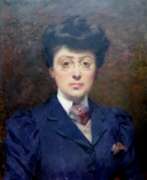

Louise Abbéma was a French painter, sculptor, and designer, celebrated for her work during the Belle Époque. Born in Étampes in 1853 into an affluent Parisian family, she became well known for her portraits, particularly of the famous actress Sarah Bernhardt, and for decorative panels commissioned for various public buildings in Paris and the Palace of the Governor in Dakar, Senegal.
Abbéma's art often depicted the upper echelons of French society and reflected the Impressionist style through her light and rapid brushstrokes. She was also notable for her involvement in the women's movement, where she contributed to the emerging image of the 'New Woman' by portraying androgynous figures and themes of intellectualism and freedom.
Among her many honors, Abbéma was awarded the Palme Academiques in 1887, nominated as the Official Painter of the Third Republic, and in 1906, she became a Chevalier of the Legion of Honour. Her works, such as "Lunch in the Greenhouse" and "Portrait of Sarah Bernhardt," have seen a resurgence in popularity as the contribution of women to historical art gains more recognition.
For those interested in the evocative and historically rich artworks of Louise Abbéma, consider subscribing to our updates. We'll keep you informed about new sales, auctions, and exhibitions featuring Abbéma's work, ensuring you're always connected to the latest offerings in the art and antique collectors' sphere.
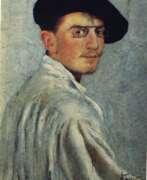

Leon Bakst (Russian: Лев Самойлович Бакст) was a prominent Russian painter and stage designer, celebrated for his innovative contributions to the world of art and theater. Born in the late 19th century, Bakst became a central figure in the cultural renaissance that swept through Russia and Europe, leaving an indelible mark on the visual and performing arts.
Bakst's work is distinguished by its rich use of color, intricate patterns, and imaginative compositions, which brought to life the exotic and often fantastical themes of the ballets and operas for which he designed. His association with the Ballets Russes, a groundbreaking ballet company that performed across Europe and America, solidified his reputation as a visionary artist. The costumes and sets he created for productions like "The Firebird" and "Scheherazade" were celebrated for their creativity and exoticism, influencing not only the world of theater but also fashion and interior design.
His art extends beyond the stage, with paintings and illustrations that capture the same vibrancy and innovation found in his theatrical work. Museums and galleries around the world, including the State Russian Museum in St. Petersburg and the Metropolitan Museum of Art in New York, house his works, allowing art lovers to experience the magic of Bakst's creations.
For collectors and experts in art and antiques, Leon Bakst's work offers a unique glimpse into a transformative period of cultural history, where the boundaries of art and performance were reimagined. His legacy continues to inspire and captivate, making his pieces highly sought after in the art world.
We invite enthusiasts and collectors to sign up for updates on new product sales and auction events related to Leon Bakst. This subscription ensures you remain informed about opportunities to acquire pieces connected to this extraordinary artist's legacy, without any overbearing commitments. Join us in celebrating the enduring impact of Leon Bakst's art and design.
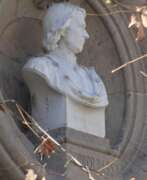

Ferrer Bassa was a renowned Catalan Gothic painter and miniaturist, active in the early 14th century. His artistry not only graced the courts of Aragon but also laid the foundations of the Catalan School of painting. Bassa is celebrated for integrating the traditional Gothic style with French and Sienese influences, creating a unique visual lexicon that was ahead of his time.
Born around 1285, Bassa's career highlights include his work for Alfonso IV of Aragon and the impactful series of frescos in the St. Michael Chapel at the Monastery of Pedralbes in Barcelona. These frescos, executed between 1345-46, are Bassa's most significant surviving works. They showcase an Italianate style, featuring around twenty scenes that focus on the Passion of Christ and the Seven Pains of the Virgin. His work in the Great Canterbury Psalter also stands as a testament to his exemplary skills.
Bassa's contribution to the world of art extends beyond his own creations. He played a pivotal role in the evolution of the Catalan phase of Gothic painting, significantly influencing the period's artistic direction. His legacy was furthered by his son, Arnau Bassa, who continued his father's artistic journey.
For art collectors and enthusiasts, the works of Ferrer Bassa are more than historical artifacts; they are the keystones of Catalan Gothic art. His influence resonates in the works of subsequent artists and continues to inspire modern artistic expressions. For those wishing to delve deeper into the rich tapestry of Gothic art, Ferrer Bassa's works are an indispensable resource.
To stay informed about upcoming sales and auction events featuring Ferrer Bassa's works, we invite you to sign up for our updates. This subscription is tailored for enthusiasts and collectors like you, ensuring you never miss an opportunity to own a piece of this illustrious artist's legacy.
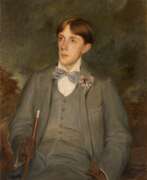

Aubrey Vincent Beardsley was an English artist and illustrator, whose brief yet impactful career left an indelible mark on the art world. Born in Brighton, England, in 1872, Beardsley's work was instrumental in the development of the Art Nouveau movement, and he is often remembered for his bold, innovative illustrations that challenged Victorian sensibilities with their erotic and often grotesque imagery.
Beardsley's artistic journey was characterized by his unique ability to blend influences from Japanese woodcuts with the aesthetic of the English Art Nouveau movement. His illustrations are distinguished by their stark contrasts of black and white, intricate details, and the absence of middle tones, creating a dramatic and unmistakable style. He was particularly known for his illustrations for the limited edition of "Le Morte D'Arthur," which were celebrated for their elaborate detail and pre-Raphaelite influences, despite their sometimes grotesque details. This work, along with his contributions to "The Yellow Book" and illustrations for Oscar Wilde's "Salome," showcased his talent for capturing the decadent and the macabre, earning him both acclaim and controversy (Wikipedia, The Collector).
Beardsley's career, though short-lived due to his untimely death at the age of 25 from tuberculosis, was marked by significant contributions to various publications, including "The Studio" and "The Savoy," which he co-founded. His work for "The Yellow Book," where he served as art editor, was particularly influential. The magazine, using the latest image-reproduction technology of the time, allowed Beardsley to make dramatic use of black and white space, reflecting his vision of modern life and aesthetics (V&A Museum).
Despite facing health challenges and controversies, including being dismissed from "The Yellow Book" during the scandal surrounding Oscar Wilde's arrest, Beardsley continued to work on projects that pushed the boundaries of conventional morality and art. His illustrations for works like Aristophanes' "Lysistrata" and his retelling of the Tannhäuser legend are testament to his enduring creative spirit and his willingness to explore themes of decadence, sexuality, and the grotesque.
Beardsley's legacy extends beyond his death, influencing not only the Art Nouveau movement but also future generations of artists and illustrators. His work continues to be celebrated for its daring originality and its challenge to the norms of his time. The Victoria and Albert Museum, among others, has celebrated Beardsley's contributions to art and culture, showcasing his ability to intertwine the beautiful and the grotesque in ways that remain provocative and engaging to this day.
For collectors and experts in art and antiques, Beardsley's work offers a fascinating glimpse into the aesthetic and cultural shifts of the late 19th century. His influence on poster art, illustration, and the broader Art Nouveau movement underlines the significant impact he had during his brief career. To stay updated on sales and auction events related to Aubrey Vincent Beardsley's work, signing up for updates can provide exclusive access to the continuing legacy of this remarkable artist.


Alexandre Nikolayevich Benois (Russian: Алекса́ндр Никола́евич Бенуа́) was a distinguished Russian artist, art critic, and historian, celebrated for his pivotal role in the art world, particularly in painting and stage design. Born into a family deeply embedded in the cultural fabric of Russia, Benois was instrumental in the development of the Russian artistic movement at the turn of the 20th century. His contributions to art and culture extend beyond his vivid paintings; he was a founding member of the World of Art (Mir iskusstva), a significant art movement and magazine that sought to elevate Russian artistry on the global stage.
Benois' work is notable for its intricate detailing, vibrant use of color, and the ability to convey deep narratives within each piece. His designs for ballets such as "Petrushka" and "The Sleeping Beauty" remain iconic, showcasing his mastery over the fusion of visual art and performance. This synthesis not only enhanced the ballets’ visual appeal but also deepened the audience's engagement with the narrative. Museums and galleries around the world, including the Russian Museum in St. Petersburg and the Tretyakov Gallery in Moscow, house his works, underscoring his global recognition and the enduring appeal of his artistic vision.
For collectors and experts in art and antiques, Benois' oeuvre represents a fascinating exploration of early 20th-century Russian culture, art, and the avant-garde movement. His ability to blend traditional Russian themes with the modernist trends of his time makes his work a valuable study in the evolution of modern art. Those interested in the rich tapestry of Russian cultural history and the interplay between art and performance will find Benois' contributions invaluable.
To stay informed about new discoveries, sales, and auction events related to Alexandre Nikolayevich Benois, we encourage you to sign up for updates. This subscription is tailored specifically for enthusiasts eager to deepen their appreciation and understanding of Benois' legacy, ensuring you're the first to know about opportunities to acquire pieces connected to this luminary of Russian art.
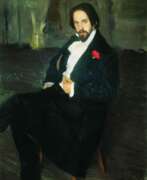

Ivan Yakovlevich Bilibin (Russian: Ива́н Я́ковлевич Били́бин) was a Russian illustrator, stage designer, and teacher, famed for his fairy tale illustrations and stage designs that drew heavily from Russian folklore and traditional art. Born in 1876 in St. Petersburg and passing away in 1942 during the Siege of Leningrad, Bilibin's career spanned a period of great change in Russia, from the pre-revolutionary times through to the Soviet era. His work is celebrated for its intricate detail, vibrant colors, and deep homage to Slavic myths and legends.
Bilibin's journey into the world of art and folklore began after his studies at the St. Petersburg University and the Munich art school. He was deeply influenced by Russian folklore, as well as modern French and Japanese art. This amalgamation of influences resulted in a unique style that made his work stand out. His illustrations for Russian folk tales, such as "The Frog Princess," "Vasilisa the Beautiful," and "Marya Morevna," are among his most celebrated works, encapsulating the essence of Russian narrative traditions.
Bilibin's career was not confined to illustration. He made significant contributions to the world of theater, designing sets for operas and ballets that further entrenched his reputation. His work took him beyond Russia, with periods spent in Egypt and France, where he continued to produce work for the Russian émigré and European communities. Despite the political turmoil of his time, Bilibin remained deeply connected to his roots, returning to Soviet Russia in 1936, where he continued his artistic and academic pursuits until his death in 1942.
For collectors and experts in art and antiques, Bilibin's works represent a bridge between the mystical past and the artistic innovations of the early 20th century. His legacy is preserved in museums and galleries worldwide, offering a glimpse into a world where folklore and art intertwine.
If you are keen to explore more about Ivan Yakovlevich Bilibin's remarkable contributions to art and folklore, consider signing up for updates. This subscription will keep you informed about new sales, auctions, and exhibitions related to Bilibin's work, ensuring you never miss an opportunity to engage with the magical worlds he created.
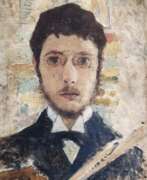

Pierre Bonnard was a distinguished French painter and printmaker, recognized as one of the foremost colorists of modern art. Born on October 3, 1867, in Fontenay-aux-Roses, France, Bonnard initially pursued law studies before embracing his true calling in art. He attended the École des Beaux-Arts and the Académie Julian, where his journey as an artist began in earnest.
Bonnard's art is characterized by its vibrant use of color and the portrayal of intimate, sunlit domestic interiors and gardens. His works often include scenes populated with friends and family, creating a narrative that is both personal and relatable. His distinctive style was influenced by Japanese prints, evident in his use of bold patterns and flat color planes. This influence earned him the nickname "Le Nabi très japonard" among his peers in the Les Nabis group, an avant-garde artists' group he joined in his twenties.
His early work, such as "Woman in Checkered Dress" (1890), showcases the influence of Japanese prints. Bonnard's talent was evident from the beginning of his career, with Claude Roger-Marx noting in 1893 his ability to capture fleeting poses and expressions. His work evolved over time, moving towards a style that resonated with the Intimists' focus on personal and intimate spaces.
Bonnard's wife, Marthe, was a recurring subject in his paintings, often depicted in everyday scenarios. Their relationship, spanning several decades, was a significant influence on his work. His paintings, such as "Dining Room on the Garden" and "Landscape at Le Cannet," demonstrate his mastery in capturing light and color, creating a sense of warmth and intimacy.
Bonnard's work remains influential and celebrated, with his paintings held in esteemed collections worldwide. His ability to transform everyday scenes into vibrant, color-filled canvases has made him a beloved figure in the world of modern art.
Art collectors and experts in the field will find Bonnard's work a study in the transformative power of color and composition. For those interested in staying updated on sales and auction events related to Pierre Bonnard's works, signing up for updates would provide valuable insights into this remarkable artist's enduring legacy.
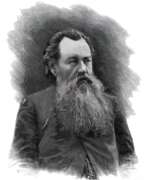

Karel Brož (Russian: Карл Осипович Брож) was a Czech and Russian artist, renowned for his detailed illustrations and watercolors. Born on November 25, 1836, in Prague, he studied at the Vienna Academy of Fine Arts and later moved to Russia, where he became a prominent illustrator for various publications, including "Vsemirnaya Illustratsiya."
Brož's work is characterized by its meticulous attention to detail and vibrant depictions of historical and everyday scenes. His illustrations, particularly for Russian periodicals, captured the essence of 19th-century life and remain highly regarded in art circles.
Collectors value Brož's pieces for their historical significance and artistic quality. His illustrations have been featured in numerous exhibitions and are part of prestigious collections. For those interested in historical illustrations, Karel Brož’s work offers a unique glimpse into the past.
Sign up for updates on new product sales and auction events related to Karel Brož to stay informed about the latest opportunities to acquire his work.


Bernard Buffet was a French artist renowned for his distinctive style of painting, printmaking, and sculpture. His work, characterized by expressive, angular lines and somber themes, has captivated collectors and art enthusiasts worldwide. Buffet's art, deeply influenced by the post-war period in France, reflects themes of despair, loneliness, and the human condition, often portrayed through his iconic clowns and desolate landscapes. His approach to art, marked by stark compositions and a vivid portrayal of existential angst, positioned him as a leading figure in the modern expressionist movement.
Buffet's career was meteoric from its onset; by his early twenties, he was celebrated alongside cultural icons of the time, earning him a spot among the "Fabulous Five" of post-war France. Despite his early acclaim, Buffet's later years were marked by controversy and a decline in popularity, as shifts in artistic trends and criticism over his lifestyle choices overshadowed his contributions. Nevertheless, his work remained prolific, with more than 8,000 paintings to his name, illustrating an unwavering commitment to his art until his tragic death in 1999.
Today, Bernard Buffet's legacy is undergoing a renaissance, with a renewed appreciation for his artistic achievements. Exhibitions and retrospectives across the globe, particularly in Japan and Europe, have reignited interest in his oeuvre, showcasing the enduring relevance of his work. Notably, the Bernard Buffet Museum in Japan, founded during his lifetime, stands as a testament to his impact and the global admiration for his art.
For collectors and experts in the field of art and antiques, Buffet's work offers a unique insight into the complexities of the human psyche and the existential dilemmas of the 20th century. His ability to evoke profound emotional responses through his distinctive visual language makes his work highly sought after in the art market today.
To stay informed about new product sales and auction events related to Bernard Buffet, we encourage you to sign up for updates. This subscription service is tailored specifically for enthusiasts keen on exploring the profound legacy of Bernard Buffet, ensuring you remain at the forefront of notable developments in the art world.
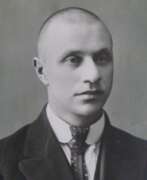

Vladimir Davydovych Burliuk (Russian: Владимир Давидович Бурлюк) was a Ukrainian avant-garde artist, known for his contributions as a Neo-Primitivist and Cubo-Futurist. Born on March 27, 1886, in the Russian Empire, Burliuk's work spanned various mediums, including painting and book illustration. His art is celebrated for its bold experimentation and pioneering spirit in the early 20th century avant-garde movement. Burliuk's life was tragically cut short when he died at the age of 32 during World War I in 1917.
Burliuk's artistic output is characterized by its innovative approach and his involvement in the avant-garde circles that radically transformed Russian art. His works were part of significant avant-garde exhibitions and movements, showcasing his commitment to pushing the boundaries of traditional art. Among his notable works are contributions to publications and exhibitions that captured the essence of the avant-garde, such as "Sadok Sudei (A Trap for Judges)" in 1910 and "Moloko kobylits (Milk of Mares)" in 1914. His art is recognized for its unique body of works, blending Cubism, Rayonism, and elements of Futurism, marked by stylistic unity and high valuation by connoisseurs.
Burliuk's legacy extends beyond his own creations; his involvement with key figures and movements of the time, including his brother David Burliuk, further emphasizes his role in shaping modern art. Despite his early death, Vladimir Burliuk's work remains a testament to the vibrancy and dynamism of the avant-garde movement, with his pieces held in high regard by collectors and experts alike.
For those interested in exploring the depths of avant-garde art, Burliuk's oeuvre offers a fascinating glimpse into the revolutionary spirit of early 20th-century artistic exploration. His contributions continue to inspire and intrigue art lovers, underscoring the lasting impact of his brief but impactful career.
Sign up for updates to stay informed about new product sales and auction events related to Vladimir Davydovych Burliuk, and immerse yourself in the world of avant-garde artistry that continues to resonate with collectors and art enthusiasts alike.


Patrick Caulfield was an English painter and printmaker renowned for his distinct approach to art, which often combined elements of photorealism within simplified scenes. Born in London in 1936, Caulfield's artistic journey led him to become a significant figure associated with the British Pop Art movement, though he personally refuted this label, aligning more closely with early European Modernist traditions. His works are celebrated for their bold canvases, characterized by sleek lines, bold colors, and an intriguing blend of the real and the abstract, held in esteemed collections worldwide, including those of Charles Saatchi and David Bowie.
Caulfield's art is recognized for its innovative use of light, space, and color, creating a unique narrative that transcends the conventional boundaries of painting. Noteworthy pieces like "Pony" (1964) and "After Lunch" (1975) exemplify his skill in blending painting styles, creating "pictures within pictures" that challenge viewers' perceptions of space and reality. Caulfield's interiors, such as "Dining Recess" (1972) and "Tandoori Restaurant" (1971), convey a sense of melancholy and loneliness through their depiction of everyday spaces devoid of human presence, making his work profoundly resonant.
Throughout his career, Caulfield received several commissions, contributing to public spaces and collections across the globe. His art has been exhibited in numerous solo exhibitions, including at Tate Britain and the Royal Academy in London, underscoring his influence and importance in the art world.
For art collectors and experts, Patrick Caulfield's work offers a unique perspective on the everyday, merging the abstract with the real in ways that continue to captivate and intrigue. To stay updated on sales and auction events related to Patrick Caulfield's art, signing up for updates is highly recommended, ensuring access to the latest offerings and insights into his enduring legacy.
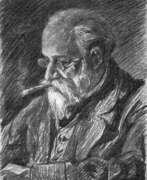

Adolf Iosifovich Charlemagne (Russian: Адольф Иосифович Шарлемань) was a renowned Russian painter, born in 1826 in Saint Petersburg. He excelled in historical, genre, and battle scenes, deeply influenced by his artistic lineage—his father was an architect and his grandfather a sculptor. Educated at the Imperial Academy of Arts under Fyodor Bruni and Bogdan Willewalde, Charlemagne's works are celebrated for their historical accuracy and intricate details.
Charlemagne's notable works include "The Capture of Kazan by Ivan the Terrible" and "The Battle of Kulikovo," which vividly capture significant moments in Russian history. His paintings are known for their meticulous attention to detail, dramatic compositions, and ability to convey the emotional intensity of historical events. These masterpieces are housed in prestigious Russian museums, showcasing his contributions to Russian cultural heritage.
Throughout his career, Charlemagne received numerous accolades, including the titles of Academician and Professor at the Imperial Academy of Arts. His dedication to historical accuracy and artistic excellence made him a prominent figure in Russian art.
For collectors and enthusiasts, owning a piece by Adolf Iosifovich Charlemagne means acquiring a significant part of Russian history. To stay updated on new product sales and auction events related to Charlemagne's works, sign up for our updates today.
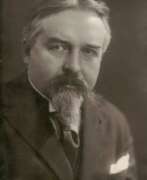

Maurice Denis, a French painter and writer, was an influential figure in the transition from impressionism to modern art. Born on November 25, 1870, in Granville, France, Denis's artistic journey began at the Académie Julian in Paris. Here, he met future collaborators like Paul Sérusier and Pierre Bonnard, with whom he later formed the Nabis group, a collective deriving its name from the Hebrew word "Nabi," meaning "Prophet".
Denis's style evolved from neoimpressionism, influenced by artists like Seurat, to a more decorative and colorful approach under the influence of Gauguin. This shift is evident in works like "Taches du soleil sur la terrace" (1890). He famously stated, "Art is no longer a visual sensation... it is a creation of our spirit," highlighting his belief in art as an idealistic expression, transcending mere imitation of nature.
Denis was also impacted by Japanese art, which influenced his compositions and styles, contributing to his unique and recognizable approach. His philosophy on art, encapsulated in his 1890 essay published in "Art et Critique," emphasized the importance of color and form in creating emotional depth, a notion that laid the groundwork for modernism. He argued that a painting's essence lies in its colors and composition, rather than its subject matter.
Throughout his career, Denis's work evolved towards a more classical approach. His involvement with the Ateliers d'Art Sacré, founded in 1919, demonstrated his interest in religious art and decoration. His notable works include "The Legend of Saint Hubert" (1897) and "The History of Music" for the Théâtre des Champs Elysées (1912-1913).
Tragically, Maurice Denis's life ended on November 13, 1943, when he was struck by a truck during the German occupation of Paris. However, his legacy endures through his contributions to modern art and symbolism, his influence on fellow artists, and his works displayed in various museums and galleries.
For collectors and art experts, Denis's work offers a unique glimpse into the evolution of modern art. His blend of symbolism, color, and form marks a significant shift in art history. To stay updated on new sales and auction events related to Maurice Denis's work, sign up for our newsletter. This subscription will keep you informed about the latest developments in the world of this remarkable artist.
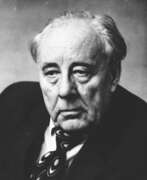

Mykhailo Hordiiovych Derehus (Russian: Михаил Гордеевич Дерегус) was a prominent Soviet Ukrainian graphic artist, painter, and educator, renowned for his significant contributions to the visual arts in Ukraine. Born on December 5, 1904, in Veseloye, Kharkiv Oblast, Derehus' artistic journey began at the Kharkiv Art Institute, where he not only honed his skills but also later imparted knowledge as a lecturer. His diverse body of work spans thematic painting, landscapes, still lifes, portraiture, etching, and book illustration, demonstrating his versatility across different mediums.
Derehus' art, particularly his expressionist lithographs, played a crucial role in illustrating significant Ukrainian literary works, such as Ivan Kotliarevsky's "Eneïda" and the writings of Nikolai Gogol, Lesya Ukrainka, Marko Vovchok, and Natan Rybak. His illustrations are celebrated for their depth and ability to capture the essence of the Ukrainian spirit. A testament to his mastery and significant impact on Ukrainian art, Derehus was awarded the prestigious Shevchenko National Prize in 1969. His legacy includes his leadership as Chairman of the National Union of Artists of Ukraine from 1955 to 1962 and his works being held in esteemed collections such as the Kuindzhi Art Museum in Mariupol, Ukraine.
For collectors and experts in art and antiques, Derehus' work represents a vital link in the chain of Ukrainian cultural heritage, offering unique insights into the nation's artistic evolution. His contributions have not only enriched Ukrainian visual arts but also ensured that the beauty of Ukraine's landscapes, its historical narratives, and the richness of its folklore continue to inspire future generations.
If you're intrigued by the artistic legacy of Mykhailo Derehus and wish to explore more about his works and their significance in the realm of Ukrainian art, consider signing up for updates. This subscription will keep you informed about new product sales and auction events related to Derehus, offering exclusive opportunities to connect with the rich tapestry of Ukrainian cultural expression.
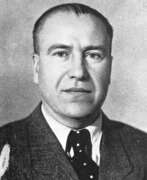

Aleksandr Aleksandrovich Deyneka (Russian: Алекса́ндр Алекса́ндрович Дейне́ка) was a Soviet Russian artist, celebrated for his significant contribution to the world of modernist figurative painting in the first half of the 20th century. Born into a Ukrainian origin, Deyneka's artistry spanned painting, graphic design, and sculpture, leaving an indelible mark on Russian modernism. His works, characterized by vivid movement and an innovative portrayal of the Soviet lifestyle, include iconic pieces such as "The Defense of Sevastopol," "Collective Farmer on a Bicycle," and "Future Pilots," which showcase the dynamism and spirit of the Soviet era. Deyneka's commitment to Social Realism—a style aimed at the accessible portrayal of everyday life—earned him both national and international acclaim. His murals and mosaics for public buildings and metro stations in Moscow, like the Mayakovskaya station, underline his influence on the Soviet visual landscape and contribute to his legacy as a pioneer of a style that bridged European innovation with Soviet themes.
Deyneka's journey began with his education at the VHUTEMAS, where he was influenced by figures such as Mayakovsky, which shaped his approach to art as a tool for societal influence and expression. His artworks, permeated with themes of labor, sports, and a forward-looking optimism, reflect the Soviet Union's utopian ambitions and the complexities of its societal structure. Notably, Deyneka's "Mother" stands out as a powerful symbol of the Soviet woman, intertwining high social awareness with the natural role of motherhood, highlighting the artist's nuanced approach to depicting Soviet life.
Throughout his career, Deyneka remained a formidable figure in art, navigating through various artistic societies and contributing to magazines and posters that defined the visual narrative of the Soviet Union. His travels to Italy, France, and the US broadened his perspective, enriching his work with international influences while retaining his distinct stylistic identity. Deyneka's decorations for the Moscow Metro not only won prestigious awards but also immortalized his vision of Soviet progress and optimism, capturing the essence of an era poised between grand aspirations and complex realities.
For art collectors and enthusiasts of Russian modernism, Deyneka's works offer a window into the vibrancy and ideological fervor of the Soviet Union, embodying the era's aesthetic and thematic aspirations. His contributions to the public and artistic spheres underscore the role of art in shaping and reflecting societal values, making his oeuvre a vital point of study for anyone interested in the intersections of art, history, and society.
To stay informed about exhibitions and auctions featuring Aleksandr Aleksandrovich Deyneka's work, sign up for updates. This subscription ensures you're always in the know about new sales and events related to this iconic artist, allowing you to deepen your appreciation and possibly enhance your collection.
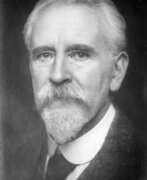

Francis Bernard Dicksee was an eminent English painter and illustrator, celebrated for his dramatic portrayals of historical, literary, and legendary themes. Born into an artistic family in 1853, Dicksee received his early education in art from his father, Thomas Dicksee, a renowned painter himself. His proficiency in art was evident from a young age, leading to his enrollment at the Royal Academy Schools at the tender age of 17.
Dicksee's works are characterized by their romantic flair and vivid storytelling. He masterfully blended color, emotion, and detailed historical settings to create captivating scenes. His most notable works include "The Funeral of a Viking" (1893), housed at the Manchester Art Gallery, and "The Two Crowns" (1900), celebrated for its striking medieval pageantry. These paintings, along with others like "Romeo and Juliet" (1884) and "Chivalry" (1885), exemplify his skill in romantic and historical portrayals.
Throughout his career, Dicksee remained true to his Victorian roots, often expressing skepticism towards modernism in art. His dedication to traditional artistic values led to his election as the President of the Royal Academy in 1924, a position that reflected his standing and contributions to the art world. Despite his reservations about modern artistic trends, Dicksee's work continued to resonate with audiences, cementing his legacy as a quintessential Victorian artist.
Dicksee's influence extended beyond the canvas; his paintings like "The Funeral of a Viking" found a place in popular culture, being used as album covers by bands like Bathory. His comprehensive portfolio, documented by Simon Toll in a 2016 publication, reveals a rich tapestry of portraits, historical scenes, and romantic depictions, offering a window into the Victorian era's artistic sensibilities.
For art collectors and enthusiasts, Dicksee's work represents a significant chapter in the history of English painting. His paintings, often featuring dramatic and emotional scenes, are not just artistic masterpieces but also historical documents that capture the essence of an era.
To stay informed about new discoveries and sales related to Francis Bernard Dicksee's works, sign up for updates. This subscription is an excellent resource for collectors and art experts, providing timely information on auction events and product sales related to this influential artist.
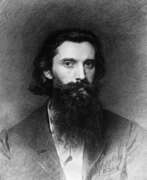

Nikolai Dmitrievich Dmitriev-Orenburgsky (Russian: Николай Дмитриевич Дмитриев-Оренбургский) was a Russian painter born in 1837 in Nizhny Novgorod. He is renowned for his battle scenes and depictions of Russian village life. Dmitriev-Orenburgsky studied at the Imperial Academy of Arts in St. Petersburg, where he was part of the ‘revolt of fourteen’—a group of students who challenged the conservative academic traditions of their time.
Dmitriev-Orenburgsky's work often reflected the harsh realities of rural Russian life, with a notable melancholic undertone even in his more cheerful scenes. His involvement in the Russo-Turkish War (1877-78) profoundly influenced his art, leading to several acclaimed battle paintings. Some of his significant works include "General M. D. Skobelev on his Horse" and "Siege of Plevna," which are housed in prestigious collections such as the Hermitage Museum and the Russian Museum.
His genre paintings, like "Sunday in a Village" and "Fire in a Village," capture the essence of Russian peasant life with striking realism and emotional depth. Dmitriev-Orenburgsky's legacy is celebrated for its historical significance and artistic excellence, making his works highly sought after by collectors and exhibited in major galleries worldwide.
Stay informed about upcoming sales and auctions featuring works by Nikolai Dmitrievich Dmitriev-Orenburgsky by signing up for our updates. Subscribe now to receive alerts on new product sales and auction events related to this distinguished artist.
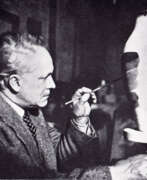

Raoul Dufy, a renowned French artist, is celebrated for his vibrant and decorative style, which left a significant mark in the realms of Fauvism and Post-Impressionism. Born in 1877 in Le Havre, France, Dufy's artistic journey was profoundly influenced by Henri Matisse's Fauvist work "Luxe, Calme et Volupté," which he encountered at the Salon des Indépendants in 1905. This experience steered him towards Fauvism, a style that emphasized bold contours and bright colors.
Dufy's artistic evolution saw him briefly embrace Cubism around 1920, after which he developed a unique approach. This approach, often referred to as stenographic, was characterized by skeletal structures, foreshortened perspectives, and the use of thin, quickly applied washes of color. His works, known for their cheerful and fashionably decorative nature, often depicted scenes of leisure like yachting, the French Riviera, and chic parties, capturing the essence of the period's optimism.
In addition to his painting, Dufy was also a commercial artist, illustrator, and designer, contributing significantly to textile design and public murals. His large-scale public art commissions combined modern and allegorical subjects with exuberant outlines and intense colors, showcasing a modernist take on traditional mural work. Notable works by Dufy include "The Regatta," "The Harvester," and the monumental "The Electricity Fairy," a large mural commissioned for the 1937 World's Fair in Paris.
His works are housed in prestigious public collections worldwide, including the Art Institute of Chicago, the Musée d'Art Moderne de Paris, and the National Gallery of Art in Washington, D.C. Despite his artistic achievements, Dufy's focus on decorative art and the lack of engagement with wider social concerns has led to a varied critical reception of his work. Nonetheless, his contribution to 20th-century art, particularly in popularizing a vibrant and illustrative style, remains undisputed.
If Raoul Dufy's artistry captivates you and you wish to stay informed about the latest artworks, exhibitions, and auction events related to this remarkable artist, we invite you to sign up for our updates. By subscribing, you'll receive timely notifications about new pieces for sale and upcoming auctions. This is a wonderful opportunity for collectors and art enthusiasts to enhance their appreciation and possibly their collections of Dufy's work. Stay connected with the world of art and don't miss any chance to acquire unique pieces by this celebrated artist.
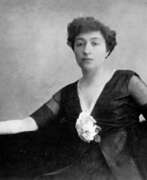

Aleksandra Aleksandrovna Ekster (Russian: Алекса́ндра Алекса́ндровна Эксте́р), a luminary of the Russian avant-garde, was a painter and designer whose work traversed the boundaries of Cubo-Futurism, Suprematism, and Constructivism, eventually influencing the Art Deco movement. Born in Białystok (then part of the Russian Empire, now Poland) and later splitting her life among Kiev, St. Petersburg, Moscow, Vienna, and Paris, Ekster played a pivotal role in bridging Russian and European artistic movements. Her innovative approach to art was characterized by dynamic movement, vibrant color contrasts, and geometric compositions, which were evident in her paintings, theater set and costume designs, and educational endeavors.
Ekster's studio became a hub for the intellectual and artistic elite, hosting figures like poets Anna Akhmatova and Osip Mandelstam, as well as painters Pablo Picasso and Georges Braque during her stays in Paris. Her involvement in significant art exhibitions, such as the Salon des Indépendants and the Salon de la Section d'Or in Paris, showcased her works alongside those of Jean Metzinger, Marcel Duchamp, and others, marking her as a key figure in the avant-garde community.
Beyond painting, Ekster's contributions to theater and design were profound. She worked on costume and set designs for Alexander Tairov's Chamber Theatre and participated in the revolutionary festivities' decoration in Kiev and Odessa. Ekster's pedagogical efforts included teaching at the Higher Artistic-Technical Workshop (VKhUTEMAS) in Moscow, fostering a new generation of avant-garde artists.
Ekster's work is housed in various international and private collections, reflecting her lasting impact on the art world. Her ability to integrate different genres and styles, along with her commitment to experimentation and innovation, made her one of the most influential women in the Russian avant-garde.
For those fascinated by the pioneering spirit of Aleksandra Aleksandrovna Ekster and the avant-garde movement, signing up for updates on new product sales and auction events related to her work is a compelling way to stay informed. This subscription ensures enthusiasts and collectors are always in the loop regarding opportunities to engage with Ekster's enduring legacy.
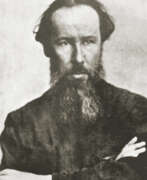

Vladimir Andreyevich Favorsky (Russian: Владимир Андреевич Фаворский) was a distinguished Russian artist and educator, renowned for his profound contributions to the realms of printmaking, illustration, and theory of art. Born into a milieu rich in culture and intellectual pursuit, Favorsky's work transcended the conventional boundaries of art, integrating elements of sculpture, painting, and graphic design, thereby redefining the aesthetic parameters of his time.
Favorsky's artistic philosophy was grounded in the belief that art should be a reflection of reality, yet imbued with the artist's personal vision and inner world. This approach led him to explore various mediums, yet he is most celebrated for his woodcuts and book illustrations. His ability to blend classical techniques with innovative narratives made his works timeless, appealing to collectors and art enthusiasts alike. Favorsky's contributions were not confined to his own creations; as a revered educator at the Moscow Printing Institute, he influenced generations of artists, instilling in them a deep appreciation for the cultural and historical significance of art.
Among his notable works, Favorsky's illustrations for classics of Russian literature stand out, capturing the essence of the narratives with striking visual imagery. While specific pieces in museums or galleries could not be verified without current research, his influence permeates the Russian art scene, with his works held in high esteem by collectors around the globe.
For collectors and experts in art and antiques, Favorsky's oeuvre represents a bridge between traditional and modern artistic expressions, offering a rich tapestry of themes and techniques to explore. His legacy continues to inspire, serving as a testament to the enduring power of artistic innovation and vision.
For enthusiasts eager to delve deeper into Favorsky's world, we invite you to sign up for updates. This subscription ensures you're the first to know about new product sales and auction events related to Vladimir Andreyevich Favorsky, without overwhelming your inbox. Embrace the opportunity to enhance your collection with pieces from a master of Russian art and culture.
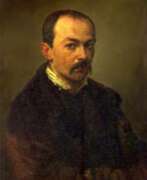

Pavel Andreyevich Fedotov (Russian: Павел Андреевич Федотов), a pioneering Russian realist painter, was born on July 4, 1815, in Moscow, Russia. He is celebrated as the founder of Russian genre painting and critical realism, capturing the essence of Russian society with sharp satire and insight. His works, including notable pieces like "The Major's Marriage Proposal" and "The Gamblers," reflect a keen observation of social conditions and human interactions, often infused with humor and moral critique.
Fedotov's artistic journey began in the military, where he served as an officer before fully dedicating himself to art. His transition from military life to art was marked by his attendance at the Imperial Academy of Arts in St. Petersburg. Initially working with pencil and watercolor, he later shifted to oils in 1846, a medium through which he achieved great success and recognition.
Tragically, Fedotov's life was cut short when he died in a mental clinic in 1852 at the age of 37, following a period of intense psychological distress. Despite his brief career, his legacy lives on, influencing future generations of Russian artists and continuing to captivate audiences with his vivid portrayals of 19th-century Russian life.
For those interested in exploring the profound depth and enduring impact of Fedotov's work, signing up for updates on exhibitions and auctions of his art could provide valuable insights and opportunities to engage with his masterpieces.
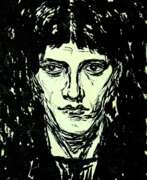

Nikolai Petrovich Feofilaktov (Russian: Николай Петрович Феофилактов) was a Russian graphic artist and a prominent figure in the Moscow art Nouveau and symbolism movements. Born in Moscow in 1878, Feofilaktov was a self-taught artist in painting and music, deeply influenced by Mikhail Vrubel and the graphics of Western European Jugendstil. Notably, in 1904, he participated in the "Scarlet Rose" exhibition, establishing connections with the "Blue Rose" artists and participating in their exhibitions. Feofilaktov was notably influenced by the work of Aubrey Beardsley, earning him the nickname "Moscow Beardsley" or "bergsmannen" due to his intricate and diletante style. His graphic work, characterized by its whimsical and slightly naive depiction of morbid fantasies, masks, and mythical creatures, was well-received for its artistic merit and distinctive Moscow style plasticity.
After 1910, Feofilaktov's popularity waned, and he shifted his focus to painting, working in the publishing house "Academia" from 1933 to 1937. His early success was marked by his association with the magazine "Vesy" and the Symbolist movement in Moscow, showcasing his ability to blend graphic art with literary culture. Feofilaktov's work was a critical reflection of the spirit and aspirations of Russian symbolism's "second wave," highlighting his significant contributions to Russian graphic art and symbolist literature.
Feofilaktov's artworks have been recognized and valued in the art market, with his pieces being auctioned and collected internationally. This recognition underscores the enduring appeal and historical significance of his contributions to Russian art and symbolism.
For collectors and experts in art and antiques, Nikolai Petrovich Feofilaktov's work represents a unique blend of Russian symbolism and Moscow art Nouveau, making his pieces highly sought after. His influence on and contributions to the Russian art scene during a pivotal period in its development continue to be celebrated and studied. To stay updated on new product sales and auction events related to Feofilaktov, sign up for updates. This subscription will ensure that you are informed about opportunities to acquire works by this distinguished artist.
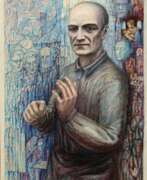

Pavel Nikolayevich Filonov (Russian: Павел Николаевич Филонов) was a distinguished Russian avant-garde painter, known for his unique approach to art and his profound influence on the culture of painting. Born in 1883, Filonov dedicated his life to developing a method he termed "Analytical Art," aiming to dissect and represent the inner dynamics of the visible world. His commitment to detail and a philosophy that art should be "made by all, for all" set him apart from his contemporaries.
Filonov's work is celebrated for its intricate texture and complex compositions, embodying a meticulous technique that captures the essence of his subjects. Unlike other artists of his time, Filonov refused to sell his artwork, believing it was a collective treasure that should benefit society. This idealism contributed to his relative obscurity during his lifetime, but posthumously, his oeuvre has been recognized for its visionary qualities. Notable works like "The Formula of the Petrograd Proletariat" exhibited at the Russian Museum in Saint Petersburg showcase his mastery and ideological commitment to art.
Filonov's legacy is a testament to his relentless pursuit of an artistic vision that was both revolutionary and deeply humanistic. His works, housed in prestigious museums and galleries, continue to inspire art collectors and experts, offering a window into the radical experiments of early 20th-century Russian art.
For those intrigued by Filonov's unique perspective and contributions to the art world, staying informed about upcoming exhibitions, sales, and auction events is essential. Signing up for updates ensures enthusiasts and collectors alike won't miss an opportunity to engage with the profound and captivating world of Pavel Nikolayevich Filonov.
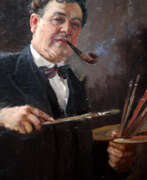

Aleksandr Mikhailovich Gerasimov (Russian: Алекса́ндр Миха́йлович Гера́симов) was a Russian and Soviet painter, born on August 12, 1881, in Kozlov (now Michurinsk), in the Tambov Governorate of the Russian Empire. He is best recognized for his leading role in promoting socialist realism in visual arts, notably through his portraits of Joseph Stalin and other Soviet leaders. Gerasimov's education at the Moscow School of Painting, Sculpture, and Architecture honed his skills, guided by masters like K.A. Korovin, A.E. Arkhipov, and V.A. Serov. His style, a blend of academic realism with impressionistic influences, vividly depicted the Russian landscape, leaders, and the daily life of the Soviet era.
His works, rich in emotionality and composition mastery, span across various themes from state portraits to landscapes and still lifes, showcasing a deep love for the Russian landscape's innate beauty. Gerasimov's contributions to art include not only significant political portraits but also captivating scenes of nature and life in Russia, marked by their emotional depth and vibrant colors. His paintings like "Stalin and Voroshilov in the Kremlin" won him the Stalin Prize in 1941, cementing his status in Soviet art history.
Gerasimov's artistry extends beyond his political work; his landscapes and portrayals of Russian expanses convey a deep lyrical sentiment, reflecting his profound connection and love for his homeland. His mastery across various mediums—oil, watercolor, gouache, and more—allowed him to explore and express a wide range of subjects, from portraits and landscapes to still lifes, showcasing his versatility and depth as an artist.
For those interested in the intersection of art and history, Aleksandr Mikhailovich Gerasimov's work offers a fascinating window into Soviet-era Russia, its leaders, and its landscapes. To stay updated on exhibitions and sales of Gerasimov's works, sign up for updates specifically focused on new product sales and auction events related to this distinguished artist.
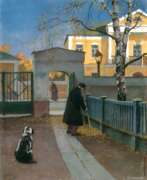

Mikhail Markianovich Germashev (Russian: Михаил Маркианович Гермашев) was a Russian painter known for his exquisite landscape paintings. Born in 1867 in Kharkov, he studied at the Moscow School of Painting, Sculpture and Architecture. Germashev's works are celebrated for their atmospheric depictions of Russian winters and serene rural scenes.
Germashev gained significant recognition in the late 19th century. His painting "Snow Fell" won first prize at the Moscow Society of Arts in 1897 and was acquired by the renowned collector Pavel Tretyakov. Other notable works include "Gray Day" (1894), "Unfrozen River" (1898), and "Rainy Day" (1902). These paintings are displayed in various museums across Russia, reflecting Germashev's prominence in the art world.
In the 1920s, Germashev moved to Paris, where he continued to paint and exhibit his works. His landscapes, characterized by their high craftsmanship and beauty, remained popular among collectors and art enthusiasts. His works can be found in prestigious collections, including the Tretyakov Gallery and the Museum of Moscow.
Stay updated on the latest sales and auction events for works by Mikhail Markianovich Germashev by subscribing to our newsletter. Don't miss the opportunity to add a piece of Russian art history to your collection!
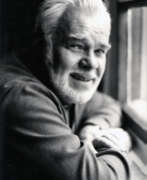

Vitaly Nikolaevich Goryaev (Russian: Виталий Николаевич Горяев) was a celebrated Soviet graphic artist, illustrator, painter, and caricaturist, born on April 14, 1910, in Tobolsk province, and passed away on April 12, 1982, in Moscow. He embarked on his artistic journey after his family moved to Chita in 1921, where he first published his drawings in the local newspaper. Goryaev's notable achievements include first-degree diplomas at the All-Union Contests "Best Books" for his illustrations to "The Adventures of Huckleberry Finn" and Gogol's "Petersburg Stories". His work was also internationally recognized, evidenced by a diploma II degree at the International Book Exhibition in Bratislava in 1967 for "Petersburg Stories", and in 1969, he was awarded the Gold Medal of the Czechoslovak Union of International Relations. Goryaev's illustrations spanned works by Russian classics like Pushkin, Gogol, and Dostoevsky, contributing significantly to the visual representation of these literary giants' works.
A laureate of the State Prize of the USSR (1967) for his contributions to illustrating Gogol's "Petersburg Stories", Goryaev was honored with the title of People's Artist of the RSFSR in 1976, and later, People's Artist of the USSR in 1981, marking his significant contributions to Soviet art. His legacy includes a profound impact on the illustration of literature, with his works being housed in prestigious collections such as the State Tretyakov Gallery, the Russian Museum, and the Pushkin Museum of Alexander Pushkin.
Goryaev's style was known for its expressive detail and ability to capture the essence of the literary works he illustrated, making his art an integral part of Soviet visual culture. His son, Sergei Vitalevich Goryaev, continues the artistic lineage as an artist, preserving the family's contribution to Russian art.
For collectors and experts in art and antiques, Goryaev's works represent a unique intersection of Soviet history, literature, and visual arts, offering a glimpse into the rich cultural tapestry of the era. His illustrations are not only important for their artistic value but also for their historical significance, embodying the spirit and challenges of Soviet society.
To stay updated on events, sales, and auctions related to Vitaly Nikolaevich Goryaev's work, sign up for updates. This subscription ensures you remain informed about opportunities to acquire pieces of this influential artist's legacy, highlighting moments when his works become available in the market.
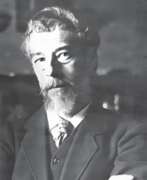

Pyotr Petrovich Gosławski (Russian: Пётр Петрович Гославский) was a Russian painter and graphic artist, known for his landscape paintings and illustrations. Born on January 29, 1871, in Saint Petersburg, he belonged to a noble family. Gosławski's works are celebrated for their realistic and impressionistic styles, reflecting the beauty of the Russian countryside and everyday life.
Gosławski's contributions to the art world include participation in numerous exhibitions and his works being held in prestigious collections like the Tretyakov Gallery. His ability to capture light and texture made his landscapes particularly admired. Additionally, he illustrated several works of Russian literature, adding to his legacy as a versatile artist.
Gosławski's works continue to be appreciated in various regional museums and private collections. He passed away in 1919 from typhus, leaving behind a rich artistic heritage. Sign up for updates on Pyotr Petrovich Gosławski to stay informed about new product sales and auction events related to his works.
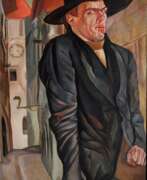

Boris Grigoriev (Russian: Бори́с Дми́триевич Григо́рьев), a Russian artist born in 1886, gained fame for his multifaceted talents as a painter, graphic artist, and writer. His works are celebrated for capturing the essence of rural Russian life and the country's Bohemian artistic circles, including figures like Anna Akhmatova and Velimir Khlebnikov. His series "Russia" (Raseya), created between 1916 and 1918, is particularly noted for its poignant depiction of Russian peasants, earning praise for revealing the true spirit of pre-revolutionary Russia. Grigoriev's international journey took him across Europe and the Americas, where he continued to paint, influenced by the likes of Paul Cézanne. Despite his global travels, Grigoriev's heart remained tied to his Russian roots, which is evident in his works housed in prominent collections such as the Tretyakov Gallery and The Russian Museum.
Grigoriev's life was marked by significant relationships and experiences that influenced his art. His early connection with prominent collector Alexander Korovin and studies at the Académie de la Grande Chaumière in Paris played a crucial role in his development. His art, characterized by expressive portraits and landscapes, spans a wide range of subjects, from notable contemporaries like Sergei Rachmaninoff and Maxim Gorky to the vibrant life and people of Russia. His series "Faces of Russia" and the poignant "Village" from the Raseya series highlight his unique ability to blend personal reflection with social commentary.
Collectors and experts in art and antiques appreciate Grigoriev's work for its depth, diversity, and the way it reflects the turbulent times he lived through. His legacy is a bridge between the Russian tradition and modernist influences, making his works highly sought after in the art world. For those interested in exploring Grigoriev's art further, his paintings are accessible in several museums and galleries worldwide, offering a glimpse into the artist's rich inner world and his perspectives on Russia and beyond.
If you are captivated by the art of Boris Grigoriev and wish to delve deeper into his world, consider signing up for updates on new product sales and auction events related to his work. This subscription is an excellent opportunity for collectors and enthusiasts to stay informed about the availability of Grigoriev's pieces on the market.
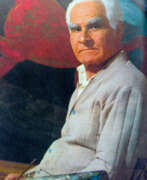

Lado Gudiashvili (Russian: Ладо Давидович Гудиашвили) was a Georgian artist, celebrated for his distinctive and innovative contributions to 20th-century art. Born in Tbilisi, Gudiashvili embarked on his artistic journey at the Tbilisi school of sculpture and fine art, later enhancing his skills in Paris's Ronson's private academy. His work, deeply influenced by Georgian life and culture, masterfully blends dramatic grotesque with poetic mystery, often incorporating elements of Caucasian and Persian traditions.
Gudiashvili's artistic repertoire was vast, encompassing painting, book design, graphic art, and teaching. He was an integral part of the Tbilisi Modernism and Socialist Realism periods, contributing significantly over a 60-year career. His engagement with avant-garde circles in Tbilisi and his murals for popular cafes showcased his versatility and creativity. Gudiashvili's Paris years (1919-1926) were marked by independence and recognition, as he exhibited alongside notable contemporaries and was encouraged to showcase his work independently.
His contributions were not limited to canvas; Gudiashvili also left an indelible mark on set design and book illustration, working on productions and literary classics that remain influential. Notably, his works adorn the Kashveti Church in Tbilisi, a testament to his monumental talent. Despite facing challenges, including political pushback for his church paintings, Gudiashvili's legacy as a pioneering Georgian artist remains undisputed. He received several high Soviet honors, underscoring his significance in the art world.
For collectors and experts in art and antiques, Gudiashvili represents a vital link between Georgian cultural heritage and modernist expressions. His works, which include engaging illustrations, set designs, and captivating paintings, continue to attract interest for their historical significance and artistic value.
To stay updated on sales and auction events featuring Gudiashvili's works, sign up for updates. This subscription will ensure you're informed about opportunities to acquire pieces by this remarkable Georgian artist.
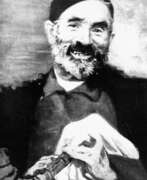

Ucha Malakievich Japaridze (Russian: Уча Малакиевич Джапаридзе) was a prominent Soviet and Georgian painter, born on August 17, 1906, in the village of Gari, Georgia. His life and work significantly contributed to the development of 20th-century Georgian visual arts, making him a key figure in this field. Japaridze's artistic journey was marked by his dedication to capturing the essence of Georgian heritage and the people's historical past through his paintings, including detailed portraits, monumental wall paintings, and book illustrations.
Throughout his career, Japaridze was recognized with numerous awards, reflecting his importance and contribution to the arts in Georgia. He held prestigious titles such as Public Artist of the Georgian SSR and Honored Artist of Georgia. His role as an academician at the Georgian Academy of Arts and his tenure as chancellor at the Tbilisi State Academy of Arts were testament to his influence and leadership in the artistic community.
Japaridze's works are celebrated for their variety and technical mastery, covering diverse fields and themes that resonated with the significant events of his time. His legacy continues to be preserved in several museums and private collections both in Georgia and internationally, including the Georgian National Museum of Fine Arts and the National Gallery of Georgia. Notably, his former home in Tbilisi has been transformed into a museum, housing his paintings, graphics, and documentary materials, offering insight into his life and artistic achievements.
For collectors and art experts interested in Soviet and Georgian visual arts, Japaridze's oeuvre represents a critical link to the cultural and historical narrative of Georgia. His ability to intertwine the personal with the collective experience of his homeland offers a profound perspective on the artistic movements of his time.
To stay informed on updates and opportunities related to Ucha Malakievich Japaridze's works, including sales and auction events, sign up for updates. This subscription ensures you're always in the loop regarding new discoveries and collections featuring Japaridze's art.
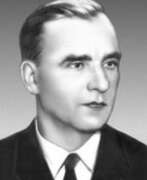

Vytautas Jurkūnas (Russian: Витаутас Юркунас) was a Lithuanian graphic artist, celebrated for his distinctive approach to printmaking and book illustration. Born in 1910 in Vindeikiai, he carved out a significant presence in the Lithuanian art scene from the interwar period through to the late 20th century, until his death in 1993 in Vilnius. Jurkūnas' education at the Kaunas School of Art laid the groundwork for a career that spanned teaching at the Vilnius Art Institute, where he influenced generations of artists, and exploring a wide array of graphic techniques, notably in linocut and wood engraving.
His early works, such as "Mother with Child" (1935) and the "Fishermen" series (1937-1939), showcase a unique style characterized by expressive lines, dynamic strokes, and a blend of realism with abstraction. During WWII, Jurkūnas produced compelling compositions reflecting the brutality of war, which added depth to his portfolio of socially and politically charged themes. Post-war, he gained renown for his book illustrations, employing linocut and wood engraving techniques to create images that resonated deeply with the textual narratives they accompanied. Notably, his illustrations for Kristijonas Donelaitis' "The Seasons" received significant acclaim.
Jurkūnas' contributions to Lithuanian graphic art are preserved in the collections of the National M. K. Čiurlionis Art Museum, the Lithuanian National Museum, and internationally, showcasing his enduring legacy. His work received the LSSR State Prize in 1957, marking a high point in his career and affirming his status as a pivotal figure in Lithuanian art.
For collectors and experts in art and antiques, Vytautas Jurkūnas' oeuvre offers a compelling study in the evolution of Lithuanian graphic art, with works that reflect the socio-political landscape of his time and his mastery of graphic techniques. To stay updated on exhibitions and auctions featuring Vytautas Jurkūnas' works, sign up for updates. These subscriptions provide insights into new sales and events dedicated to his legacy, offering a unique opportunity to engage with the rich history of Lithuanian art.
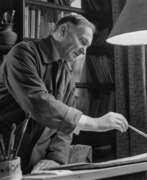

Aminadav Moiseyevich Kanevsky (Russian: Аминадав Моисеевич Каневский) was a Russian graphic artist and illustrator, celebrated for his satirical works and contributions to children's literature. Born into a large family in Elisavetgrad, Kherson province (now Kropyvnytskyi), Ukraine, in 1898, Kanevsky's early life was marked by poverty, prompting him to work from a young age in various capacities, including as a photographer's assistant and factory worker. His talent in art led him to Moscow's VKHUTEMAS, where under the guidance of Dmitry Moor, he honed his skills in cartooning and illustration, eventually becoming a prominent figure in Soviet satirical and children's publications.
Kanevsky's notable contributions include the creation of the iconic character Murzilka for children's literature, and his illustrations for "The Golden Key" by Alexei Tolstoy and "Moidodyr" by Korney Chukovsky. His work extended beyond books to satirical magazines and posters, where he depicted political themes and everyday Soviet life with humor and insight. During the Great Patriotic War, he produced anti-Nazi propaganda, showcasing his commitment to the Soviet cause through art.
Kanevsky's legacy is preserved in the State Tretyakov Gallery, the State Russian Museum, and other prestigious collections, affirming his enduring impact on Russian cultural and artistic heritage. His artworks, often executed in ink or watercolor, continue to attract collectors, with auction prices reflecting the significant interest in his oeuvre.
For enthusiasts and collectors of Aminadav Kanevsky's work, signing up for updates can provide valuable information on new sales and auction events related to his creations. This ensures that aficionados do not miss out on the opportunity to acquire pieces by this remarkable artist, whose work spans the humorous to the historically significant.
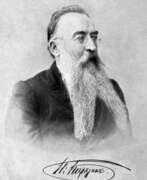

Nikolay Nikolaevich Karazin (Russian: Николай Николаевич Каразин) was a Russian military officer, painter, and writer, known for his depictions of wars and exotic places. Born in 1842 in Kharkov (now Ukraine), Karazin came from a family of prominent intellectuals, including his grandfather Vasily Karazin, who founded Kharkiv University.
Karazin's career began in the military, where he participated in campaigns against the January Uprising in Poland and in Central Asia. His firsthand experiences in battles, such as the 1868 Bukhara campaign and the 1873 Khiva campaign, greatly influenced his later work as a painter and writer. After retiring from the military, he focused on creating large canvases depicting military actions in Turkestan, as well as writing numerous adventure and ethnographic stories and novels.
Karazin's works, which include "In the Distant Confines" (1875) and "From Orenburg to Tashkent" (1886), reflect his deep engagement with the landscapes and cultures of Central Asia. His children's book "Cranes Flying South" remains popular for its vivid storytelling and illustrations. Karazin also contributed significantly to the visual arts, participating in early designs for the Moscow Metro and becoming an academician of the Imperial Academy of Arts in 1904.
To stay updated on new product sales and auction events related to Nikolay Karazin's works, sign up for our updates. This subscription will keep you informed about the latest opportunities to acquire pieces of his illustrious legacy.
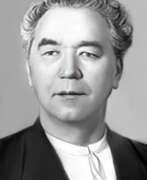

Vasyl Illich Kasiyan (Russian: Василий Ильич Касиян) Vasyl Illich Kasiyan was a Ukrainian artist and graphic designer, celebrated for his contributions to Soviet and Ukrainian visual arts. Born on January 1, 1896, in Mykulyntsi, then part of Austria-Hungary, and passing on June 26, 1976, in Kyiv, Ukrainian SSR, Kasiyan's journey through art was marked by his distinct influence on Soviet-era visual narratives. A World War I veteran, he further honed his artistic skills at the Academy of Fine Arts in Prague in the 1920s under the mentorship of Czech painter Max Švabinský.
Kasiyan's body of work spans various mediums, reflecting the ethos of his times with a deep focus on people, their struggles, and the landscapes they inhabit. Notably, his artworks such as "Portrait of a Young Woman" (1950), "Taras Shevchenko" (1945), and "My Mother" (1940) underscore his mastery in capturing the essence of his subjects, rendering them with an emotional depth that speaks volumes about his connection to the cultural and political landscape of the Soviet Union.
His contributions were widely recognized, earning him titles like the People's Artist of the Soviet Union and the Shevchenko National Prize in 1964, affirming his status as a pivotal figure in Soviet and Ukrainian art. Kasiyan's legacy is not just in the beauty of his works but also in his role as an educator and influencer in the art community, contributing significantly to the National Academy of Visual Arts and Architecture and the Kharkiv Institute of Arts.
For collectors and experts in art and antiques, Vasyl Illich Kasiyan's works represent not only aesthetic beauty but also a historical narrative of the Soviet and Ukrainian people's resilience and spirit. His pieces, found in museums and galleries worldwide, continue to inspire and provoke thought, offering a window into the artist's profound connection with his heritage.
To stay updated on exhibitions and sales featuring Vasyl Illich Kasiyan's art, sign up for our newsletter. This subscription ensures you're the first to know about new discoveries, auction events, and exclusive sales related to this esteemed artist's works.


Grigor Khanjyan (Russian: Григор Сепухович Ханджян), an Armenian artist born in Yerevan on November 29, 1926, stands out as a prominent figure in Expressionism and Armenian art. Known for his rich illustrations of historical novels and poems, Khanjyan's artworks delve deep into the heart of Armenian identity and history, transcending mere visual appeal to embody the spirit and struggles of a nation.
Khanjyan's journey into the arts began at Terlemezian Art College in Yerevan, culminating in his graduation from the Academy of Fine Arts, where he was deeply influenced by Eduard Isabekyan's thematic-compositional art. Throughout his career, Khanjyan navigated the complexities of Soviet Armenia with a distinct nationalist sentiment, often choosing subjects that celebrated Armenian culture and history over Soviet ideals. His notable works include illustrations for Paruyr Sevak's "The Unsilenceable Belfry" and tapestries like "Battle of Avarayr" and "Creation of Armenian Alphabet," which were commissioned by the Armenian Apostolic Church and later reproduced as murals at the Yerevan Cascade, now part of the Cafesjian Museum of Art.
Khanjyan's murals, especially the monumental triptych "History of Armenia" at the Cafesjian Center for the Arts, serve as a testament to his commitment to depicting key moments in Armenian history. Despite facing challenges such as the collapse of the Soviet Union and personal health issues, Khanjyan's dedication never wavered. His final work, "The Rebirth of Armenia," remained unfinished at his death on April 19, 2000, but his legacy endures through his significant contributions to Armenian art and culture.
For art collectors and experts, Khanjyan's works represent not only aesthetic achievements but also the enduring spirit of Armenian history and identity. His awards, including the title of People's Artist of the Soviet Union and honorary memberships in various academies, underscore his significance in the realm of art.
To stay informed on exhibitions and sales featuring Grigor Khanjyan's art, sign up for updates. This subscription ensures you'll be the first to know about new opportunities to engage with the work of this remarkable Armenian artist, connecting you directly to the rich tapestry of Armenian heritage and artistic excellence.
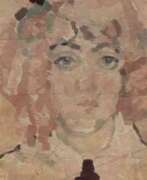

Vera Vladimirovna Khlebnikova (Russian: Вера Владимировна Хлебникова) was a Russian artist, born in 1891, who specialized in painting and graphic arts. She is celebrated for her vibrant use of color and her distinctive illustrative style, which notably contributed to the visual interpretation of her brother Velimir Khlebnikov's literary works. Her artistic education included studying under Konstantin Yuon and Ivan Dudin in Moscow, and later at the Drawing School in St. Petersburg under Yakov Zielinski. Khlebnikova's early years were marked by her involvement in various exhibitions and her participation in the artistic community of Astrakhan, where she also engaged in political education and teaching.
Khlebnikova's repertoire spanned landscapes, still lifes, and voluminous graphic works. Her pieces, such as the vivid illustrations for her brother's drama "Sysini" and poems like "Vila and the Goblin" and "Wild Melancholy", showcase her exceptional "gift of color" and narrative depth. Despite her critical role in early 20th-century Russian art, detailed information about her works and their locations in museums or galleries is scarce. However, her contributions to Russian Impressionism and Modern art have been recognized in auctions, with her works fetching varied prices, reflecting her artistic significance.
For collectors and experts in art and antiques, Vera Vladimirovna Khlebnikova remains a figure of intrigue, representing the intertwining of familial genius and individual artistic exploration. Her legacy is a testament to the vibrant cultural milieu of early 20th-century Russia and its influence on the broader narrative of modern art.
To stay updated on new discoveries, sales, and auction events related to Vera Vladimirovna Khlebnikova's work, signing up for updates is advisable. This ensures that enthusiasts and collectors are always informed about the latest opportunities to engage with her artistry.
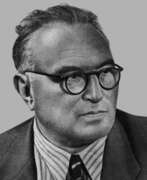

Yevgeny Adolfovich Kibrik (Russian: Евгений Адольфович Кибрик) was a prominent Soviet artist and illustrator, whose career spanned from the early 20th century until his death in 1978. Born into the turmoil of pre-revolutionary Russia, Kibrik developed a unique artistic voice that resonated with the cultural and political landscapes of his time. His early engagement with the analytical art movement, spearheaded by Pavel Filonov, significantly influenced his illustrative style. This can be seen in his illustrations for "Lieutenant Kizhe" by Tynyanov, where he first began to make a name for himself.
Kibrik's work is notable for its dynamic and expressive approach, often characterized by bold gestures and a vibrant use of color and form. This approach became particularly evident in his later works, such as the illustrations for "Colas Breugnon" by Romain Rolland, where he depicted full-bodied, epic characters with open, theatrical gestures (Arthive). His contribution to Soviet art was not just limited to his creations but extended to his role as an educator, shaping the next generation of Soviet artists through his long tenure as a professor at the Moscow state art Institute.
Kibrik's artistic legacy is preserved in various museum collections, including the State Tretyakov Gallery, the State Russian Museum, and the Pushkin State Museum of Fine Arts. His hometown of Voznesensk further honors his contributions with the Art Museum named after E. A. Kibrik, showcasing his vast body of work and continuing influence on Russian art.
For those intrigued by the evolution of Soviet art and the role of literature in shaping visual culture, Kibrik's work offers a fascinating study. His ability to weave narrative, emotion, and political commentary into his illustrations marks him as a key figure in the exploration of Soviet aesthetic and ideological expressions.
To stay updated on exhibitions and sales related to Yevgeny Adolfovich Kibrik's work, consider signing up for updates. This subscription will keep you informed about new product sales and auction events directly connected to his artistic legacy.


Sergei Alekseyevich Korovin (Russian: Серге́й Алексе́евич Коро́вин) was a Russian Realist painter, celebrated for his authentic portrayal of Russian life and landscapes. Born on August 19, 1858, in Moscow into a wealthy merchant family of Old Believers, Korovin's background was as rich and complex as his art. His education at the Moscow School of Painting, Sculpture, and Architecture under the tutelage of Vasily Perov, Alexei Savrasov, and Illarion Pryanishnikov, a distant relative, laid the foundation for his artistic journey. His teaching stint at the same school and membership in the "Union of Russian Artists" highlighted his commitment to the Russian art scene.
Korovin's masterpiece "На миру" (1893), depicting an obshchina meeting aimed at resolving a dispute, stands as a testament to his ability to capture the essence of Russian societal dynamics post-emancipation of the serfs. His later works showcased a transition towards Impressionism, marking his versatility and depth as an artist. Notably, his contributions to the artistic world were not limited to paintings alone; he also ventured into illustrations, such as those for Gogol's "The Overcoat", and decorative paintings, including a depiction of the Battle of Kulikovo at the State Historical Museum.
Despite a career overshadowed by his more famous brother, Konstantin Korovin, Sergei's dedication to Russian art and culture remains undeniable. His sudden death in 1908 due to heart failure cut short a life of artistic exploration and expression.
For enthusiasts and collectors of Russian art, Sergei Alekseyevich Korovin's works offer a unique window into the soul of Russia during a pivotal time in its history. To stay updated on new discoveries and auction events related to Korovin's art, sign up for updates. This subscription is your gateway to the rich world of Korovin's contributions to Russian Realism and Impressionism.
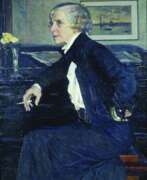

Elizaveta Sergeyevna Kruglikova (Russian: Елизавета Сергеевна Кругликова) was a Russian-Soviet artist, celebrated for her distinctive contributions to etching, silhouette art, and monotyping. Born into a St. Petersburg family with a deep appreciation for art, Kruglikova's talent blossomed early, supported by the artistic atmosphere at home. She honed her skills at the Moscow School of Painting, Sculpture and Architecture before moving to Paris, where she immersed herself in the city's vibrant art scene. From 1902, she experimented with etching, eventually becoming a notable figure in this field.
Kruglikova's Parisian period was marked by her work at the Académie de La Palette, where she both studied and taught, making significant contributions to the art of etching. Her return to Russia at the onset of World War I marked a new phase in her career, as she began exploring the realm of silhouette art, creating evocative portraits and scenes that captured the spirit of her subjects with striking clarity.
Perhaps most renowned for her pioneering work in monotype, a printing technique that allowed her unique expressivity, Kruglikova's art straddles the line between printmaking and painting. Her creations, ranging from the depiction of Parisian life to the vibrancy of the Russian cultural milieu, reflect a deep engagement with both her subjects and her mediums. The artist's ability to revive and innovate within traditional etching and printing techniques garnered her recognition and admiration, culminating in the dedication of the Fourth International Festival of Monotypes to her legacy.
Her works, characterized by a deep exploration of silhouette and monotype techniques, resonate with collectors and art enthusiasts to this day. Notably, Kruglikova was among the first Russian female artists to establish a studio in Paris, contributing significantly to the art scene there and back in Russia. Her late works include insightful portraits of fellow artists and poets, showcasing her mastery of silhouette style and positioning her as a key figure in the transition between printed graphic art and painting.
For collectors and experts in art and antiques, Kruglikova's legacy offers a fascinating glimpse into the innovative spirit of early 20th-century Russian and Soviet art. Her works not only reflect the artistic movements of her time but also stand as testaments to her individual creativity and technical prowess.
Stay informed about new sales, auction events, and exhibitions featuring Elizaveta Sergeyevna Kruglikova by signing up for updates. This subscription is your gateway to the world of a visionary artist whose work continues to inspire and captivate.
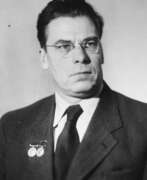

Mikhail Vasilyevich Kupriyanov (Russian: Михаил Васильевич Куприянов) was a Russian artist whose career spanned various facets of painting and graphic design, earning him a celebrated spot in the art world. Born in the early 20th century, his educational path led him from Tashkent Central Art Studios to VKhUTEMAS/VKhUTEIN in Moscow, where he honed his skills in graphic arts. Kupriyanov's artistry was not confined to a single genre; he adeptly moved between creating industrial landscapes, engaging in wartime propaganda work, and capturing serene European and Russian sceneries.
His early work, particularly in the 1920s and 1930s, showcases a profound affinity for the railway and its surrounding landscapes, depicted with remarkable precision and artistry in watercolor. These pieces uniquely blend technology with nature, showcasing dynamic compositions and an atmospheric quality that resonates with the viewer.
During World War II, Kupriyanov, along with his colleagues, ventured into the realm of anti-war propaganda, producing posters, caricatures, and leaflets that were instrumental in the Soviet Union's informational warfare. This period of his work highlights his ability to channel his artistic talent into powerful social commentary.
The post-war era saw a shift in Kupriyanov's focus to landscapes, where he captured the essence of Moscow and several European locales with a subtle and harmonious palette. These works, reminiscent of the French Barbizon school, are celebrated for their simplicity, emotional depth, and pictorial integrity, setting Kupriyanov apart as a master of landscape painting.
Kupriyanov's legacy is preserved through his numerous awards and the recognition he received, including being named a People's Artist of the USSR and a Hero of Socialist Labor. His works are featured in some of the most prestigious museums and private collections worldwide, demonstrating his enduring influence on the art world.
For collectors and art enthusiasts, Kupriyanov's oeuvre offers a compelling glimpse into the rich tapestry of Russian artistic heritage and its historical context. Engaging with his works offers not only aesthetic pleasure but also a deeper appreciation for the role of art in societal discourse. To remain informed about opportunities to acquire pieces by Kupriyanov or learn more about exhibitions featuring his work, signing up for updates is recommended. This ensures access to valuable information about sales and auction events related to this distinguished artist, enriching collections with pieces of significant historical and artistic merit.
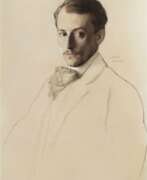

Yevgeny Yevgenyevich Lanceray (Russian: Евгений Евгеньевич Лансере), a Russian artist renowned for his graphic art, painting, sculpture, mosaic work, and illustrations, has left an indelible mark on the art world. Born in 1875 in Pavlovsk, Russia, Lanceray's art journey began early under the tutelage of prominent artists at the Drawing School of the Imperial Society for the Encouragement of the Arts in St. Petersburg. His educational odyssey continued in Paris at the Académie Colarossi and Académie Julian, places where he honed his artistic skills between 1896 and 1899.
Lanceray's association with the Mir iskusstva, an influential Russian art movement, saw him immerse in the Rococo's "sparkling dust," often drawing inspiration from 18th-century Russian history and art. Despite the societal upheaval following the 1917 Revolution, Lanceray remained in Russia, diverging from many contemporaries who chose to leave. His work during this period reflects a profound infatuation with Oriental themes, inspired by his time in Dagestan and travels to Japan and Turkey.
Perhaps one of his most significant contributions is the murals at the Moscow Kazansky railway station, where Lanceray's penchant for monumental painting and the integration of tempera paint showcased his mastery. Despite facing challenges with the Soviet regime and its constraints on artistic expression, Lanceray's legacy as a muralist, illustrator, and theater designer is undisputed. His recognition came in the form of the Stalin Prize and the title of People's Artist of the RSFSR, honors that underscored his contributions to Russian and Soviet art.
For collectors and experts in art and antiques, Lanceray's work represents a unique fusion of historical inspiration and personal expression, embodying the transitionary period of Russian art from pre-revolutionary aesthetics to Soviet realism. His murals, illustrations, and theatrical designs not only reflect his artistic versatility but also offer a window into the cultural and political shifts of his time.
To stay updated on sales and auction events related to Yevgeny Yevgenyevich Lanceray, sign up for our updates. This subscription will keep you informed about the latest discoveries and opportunities to own a piece of Russian art history.


Sergey Vasilyevich Malyutin (Russian: Сергей Васильевич Малютин) was a distinguished Russian painter, architect, and designer, celebrated for his multifaceted contributions to the world of art and design. Born in Moscow in 1859 to a merchant family, Malyutin's artistic journey began after an exhibition by the Peredvizhniki inspired him to pursue art. His formal education at the Moscow School of Painting, Sculpture and Architecture honed his talents, leading to a diverse career that spanned painting, set design for operas and ballets, and architectural endeavors.
Malyutin is perhaps best known internationally for designing the first matryoshka doll in 1890, a seminal work that has become an iconic symbol of Russian culture. His involvement in the Arts and Crafts Movement influenced his work, integrating traditional Russian folk motifs into his designs and paintings. Notably, his architectural designs, including the Church of the Holy Spirit in Talashkino and the Pertsov House in Moscow, showcase his dedication to the Russian Revival movement, blending fantastic folk motifs with architectural creativity.
Throughout his career, Malyutin also played a significant role in education, teaching at the Moscow School of Painting, Sculpture and Architecture and advocating for Socialist Realism. His contributions to Russian art were not limited to his creations; he was instrumental in founding the Association of Artists of Revolutionary Russia, emphasizing the importance of art in societal development.
For those interested in exploring the legacy of Sergey Malyutin, his works offer a window into the fusion of traditional Russian art with the innovative currents of his time. Collectors and experts in art and antiques will find his contributions to Russian arts and crafts, especially his role in the creation of the matryoshka doll, to be of particular interest.
To stay updated on exhibitions and auction events featuring Sergey Vasilyevich Malyutin's work, sign up for updates. This subscription is an invaluable resource for enthusiasts looking to deepen their understanding of Malyutin's impact on Russian art and design.
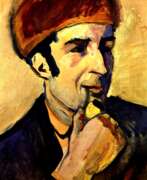

Franz Moritz Wilhelm Marc, a pivotal figure in German Expressionism, remains celebrated for his innovative contributions to 20th-century art. Born in Munich, Bavaria, within the German Empire on February 8, 1880, Marc's journey into the art world was profoundly influenced by his education at the Academy of Fine Arts in Munich. His distinct artistic vision is most famously encapsulated in works like "The Tower of Blue Horses", "Yellow Cow", and "Blue Horse I", each radiating with vibrant colors and emotional depth. Marc's affiliation with Der Blaue Reiter, a journal he co-founded, underscored his role in the German Expressionist movement, emphasizing the spiritual and symbolic significance of color in art.
Marc's oeuvre predominantly features animals, presented not merely as subjects but as embodiments of primal purity and emotional resonance. This choice of subject matter, combined with a stark, almost cubist portrayal, allowed Marc to explore themes of spirituality, masculinity (often symbolized by blue), and the tumultuous essence of life itself. His work "Fate of the Animals", which hangs in the Kunstmuseum Basel, exemplifies this thematic exploration, portraying a premonition of chaos and destruction that eerily anticipated the outbreak of World War I.
Tragically, Marc's promising career was cut short by his death at the Battle of Verdun on March 4, 1916, during World War I, where he served in the German Army. Despite his premature demise, Marc's legacy endures through his profound impact on modern art, as seen in his vibrant compositions that continue to captivate audiences in galleries and museums worldwide. His artworks, once labeled as "degenerate" by the Nazis, have transcended this vilification, achieving acclaim and fetching high sums at auction, with "Die Füchse (The Foxes)" reaching a record £42,654,500.
For collectors and experts in art and antiques, Marc's work represents not only a high point in German Expressionism but also a window into the artist's profound belief in the spiritual power of color and form. His legacy is a testament to the enduring allure and significance of early 20th-century modern art. To stay updated on sales and auction events related to Franz Marc's work, signing up for updates offers a direct link to the vibrant legacy of this remarkable artist.
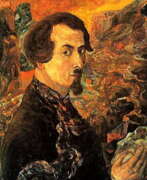

Vasily Dmitrievich Milioti (Russian: Василий Дмитриевич Милиоти) was a prominent Russian painter and graphic artist, whose artistic journey has left a significant imprint in the realms of painting and graphic design. Born into a culturally enriched environment in 1875, Milioti's oeuvre is characterized by its diverse application of mediums, including watercolor, gouache, and oil, showcasing his versatility and mastery over each.
Milioti's contributions to the art world are not only limited to his evocative artworks but also extend to his influential role within the artistic associations of his time. He was an integral member of "Blue Rose," a collective of artists that championed symbolism and mysticism in Russian art, and actively contributed to the "World of Art" movement. His involvement with the Moscow Association of Artists (Moscow Art Theatre) and the Group of 22 further exemplified his commitment to the development of Russian art.
Among his notable works, "The Poet" (1909) stands out for its intricate composition and the depth of its thematic expression. This artwork, like many of his others, reflects Milioti's deep exploration of human emotion and the philosophical underpinnings of existence, rendered through a unique stylistic approach that blends realism with symbolic elements.
For collectors and experts in art and antiques, Milioti's works represent not only the pinnacle of Russian symbolist art but also an invitation to delve into the complex interplay of colors, forms, and emotions that define the early 20th-century artistic landscape. His contributions have left an indelible mark on the history of art, making his works highly sought after by connoisseurs and institutions alike.
To stay updated on new product sales and auction events related to Vasily Dmitrievich Milioti, signing up for updates is highly recommended. This subscription ensures you're always in the know regarding the latest developments and opportunities to engage with Milioti's enduring legacy.
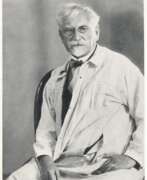

Alfons Maria Mucha, a Czech Art Nouveau painter and decorative artist, was celebrated for his innovative contributions to art, particularly his distinctive style that became synonymous with the Art Nouveau movement. Born in 1860 in the Moravian town of Ivancice, Mucha exhibited artistic talent from a young age, initially showing a proclivity for drawing and music, which were closely intertwined in his perception of creative expression. Despite early financial and educational hurdles, Mucha's passion for art led him to Vienna and subsequently Munich, where he honed his skills and absorbed influences that would shape his future work.
Mucha's career took a pivotal turn in Paris, where his poster for the actress Sarah Bernhardt's play "Gismonda" gained him immediate fame. This partnership with Bernhardt catalyzed a prolific period during which Mucha produced a flurry of artworks, including paintings, posters, and illustrations, as well as designs for jewelry, wallpaper, and theatre sets. His works are characterized by their depiction of beautiful young women in flowing robes, surrounded by lush, natural elements and often featuring pastel colors—a stark contrast to the bold hues preferred by his contemporaries.
Despite his commercial success, Mucha aspired for his art to convey a deeper spiritual message rather than merely adhering to the trendy Art Nouveau style. This led him to undertake projects that were more personal and culturally significant, such as "The Slav Epic"—a series of paintings celebrating Slavic history. Mucha's legacy is not only preserved in his diverse body of work but also in his influence on the aesthetic values of craftsmanship and design.
Collectors and experts in art and antiques continue to venerate Mucha for his unique ability to blend artistic beauty with cultural expression. His works, which are housed in museums and galleries worldwide, remain a testament to his vision and creativity.
For those keen on exploring the world of Alfons Maria Mucha further and staying updated on new sales and auction events related to his work, signing up for updates is an excellent way to ensure you never miss an opportunity to appreciate or acquire pieces related to this iconic artist. This subscription is tailored for collectors and art enthusiasts, focusing solely on new product sales and auction events concerning Mucha's legacy.
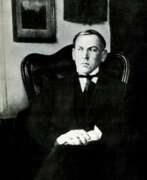

George Ivanovich Narbut (Russian: Георгий Иванович Нарбут) was a Ukrainian graphic artist, celebrated for his seminal contributions to the visual identity of the Ukrainian People's Republic through his designs of its coat of arms, banknotes, postage stamps, and charters. Born in 1886 in Narbutivka, now in Ukraine, Narbut hailed from a family with ancient Lithuanian nobility roots. He was self-taught before honing his skills in Saint Petersburg under the guidance of Ivan Bilibin and Mstislav Dobuzhinsky, and further education in Munich. His works are known for blending the simplicity of lines with sophistication in composition, marked by a distinctive style that pays homage to Ukrainian Baroque and Russian classicism with a touch of secessionist flair.
Narbut's creativity wasn't confined to graphic arts alone; he explored book illustration, including works for Hans Christian Andersen and Ivan Krylov, as well as creating toys, furniture designs, and silhouette portraits, showcasing his broad artistic talents. His influence extends beyond his lifetime, impacting generations of Ukrainian graphic designers and contributing to the branding of modern Ukraine.
Narbut's legacy is preserved in various museums and galleries, evidencing his role as a pioneer of Ukrainian graphic arts and his profound influence on the field. His artworks, such as the "Ukrainian Alphabet" and illustrations for classic literature, continue to inspire admiration and study for their historical significance and artistic merit.
Collectors and experts in art and antiques recognize Narbut's unique contribution to the Ukrainian cultural heritage and the broader art world. His life and work embody the vibrant intersection of national identity and artistic innovation, making him a figure of enduring interest.
If you're passionate about the art and history of George Ivanovich Narbut, sign up for updates to stay informed about new product sales and auction events related to his work. This subscription is your gateway to exploring the timeless beauty and significance of Narbut's contributions to art and national identity.
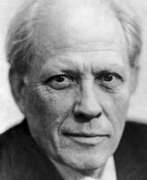

Yuri Mikhailovich Neprintsev (Russian: Ю́рий Миха́йлович Непри́нцев) was a celebrated Soviet and Russian painter, a distinguished member of the Academy of Arts of the USSR, and a professor at the Repin Institute of Arts. Born in 1909, Neprintsev's work is a vivid representation of Soviet life, encapsulating moments of history with a profound sense of realism and emotional depth. His participation in World War II as a volunteer not only influenced his thematic focus but also lent a genuine authenticity to his depictions of battle and everyday heroism.
Neprintsev's most renowned painting, "Rest after the battle," earned him the prestigious Stalin Prize in 1952. This work, along with others like "The Last Grenade" and "The Story of the Father," are poignant narratives of the Soviet spirit during trying times. His early works, such as “Conclusion of a contract for socialist competition,” created in 1939, showcased his ability to capture life's unscripted moments, portraying them with an immediacy that engages the viewer directly.
Over his long and storied career, Neprintsev was honored with numerous awards, including the Order of the Red Star, the Order of Lenin, and the title of People's Artist of the USSR. His paintings are held in prestigious collections worldwide, including the State Russian Museum and the State Tretyakov Gallery, reflecting his significant impact on Russian and Soviet art.
Neprintsev's legacy extends beyond his own creations; he was a dedicated teacher, shaping the next generation of artists at the Repin Institute of Fine Arts from 1948 until his passing in 1996. His influence on students like LA Rusov and E. V. Kozlov underscores his role in perpetuating the rich tradition of Russian painting.
For collectors and art enthusiasts interested in exploring the depth and breadth of Soviet-era art, Yuri Mikhailovich Neprintsev's work offers a compelling narrative of resilience, beauty, and the human spirit under the pressures of war and societal change. Sign up for updates on new product sales and auction events related to Yuri Mikhailovich Neprintsev, and discover more about this remarkable artist whose work continues to inspire and resonate across generations.
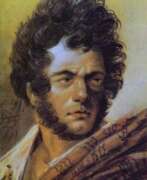

Aleksander Orłowski (Russian: Александр Осипович Орловский), a renowned Polish painter and sketch artist, was born on March 9, 1777, in Warsaw, within the Polish-Lithuanian Commonwealth. His journey into the arts began under challenging circumstances; he was the son of a tavern-keeper and his family was not wealthy. His early promise in art was nurtured by noble patron Izabela Czartoryska, who financed his initial education under the guidance of artist Jan Piotr Norblin.
Orłowski's artistic journey intersected with his military service during the Kościuszko Uprising, a major revolt against Imperial Russia and Prussia in 1794. This period of conflict significantly influenced his later works, which often depicted military scenes and the daily life of soldiers. After the partitions of Poland, Orłowski moved to Saint Petersburg in 1802, where he became a seminal figure in the development of lithography in the Russian Empire.
His oeuvre includes a wide array of subjects, from battle scenes to cultural depictions of everyday life in both Poland and Russia. Notable works such as "Battle Scene" and "Cossack Fighting Off A Tiger" showcase his skill in capturing dynamic movement and drama. His works are preserved in esteemed institutions such as The Russian Museum and The Tretyakov Gallery, highlighting their historical and artistic value.
Orłowski's impact extended beyond the canvas; he was also mentioned in literary works by notable authors like Adam Mickiewicz and Alexander Pushkin, which underscores his cultural significance in the 19th century.
For collectors and experts in art and antiques, Aleksander Orłowski's works represent a crucial segment of Eastern European art history. To stay informed about new discoveries or auction events related to his works, consider subscribing for updates. This subscription ensures you receive timely information tailored to your interests, directly relating to new sales and significant events around Orłowski's art.


Anna Petrovna Ostroumova-Lebedeva (Russian: Анна Петровна Остроумова-Лебедева) was a distinguished Russian and Soviet artist renowned for her contributions to watercolor painting and woodcut art. Her artistic journey was marked by innovation and a deep connection to her cultural roots. She is celebrated for pioneering the woodcut technique in Russia, bringing a unique vision to the portrayal of cityscapes, particularly those of Saint Petersburg.
Educated at the Stieglitz School of Technical Drawing and the Imperial Academy of Arts under the tutelage of Ilya Repin, Anna Ostroumova-Lebedeva was among the early female alumni of the academy, reflecting her pioneering spirit in the art world. Her study period in Paris at the Académie Colarossi and with James McNeill Whistler at the Académie Carmen further refined her skills, especially in graphics, which she majored in upon graduating in 1900. Her initial series of woodcuts in 1901, commissioned by Sergei Diaghilev, featured Saint Petersburg's cityscapes, establishing her affinity for capturing the essence of urban environments.
Throughout the 1900s and 1910s, her travels across Europe significantly influenced her work, as she also ventured into book illustration. Her career later transitioned into academia, where she served as a professor at the Leningrad Institute of Painting, Architecture, and Sculpture. Despite the adversities faced during the Siege of Leningrad and losing her sight later in life, she continued to inspire through her art and dedication.
Her works, such as "Summer Garden," a color woodcut from 1902, showcase her expertise in capturing the interplay of light, shadow, and nature, reflecting the serene beauty of Russian landscapes. Her pieces are not only artistic achievements but also historical documents that offer insight into the cultural and aesthetic sensibilities of her time.
For art collectors and enthusiasts, Anna Ostroumova-Lebedeva's works represent a profound connection to Russian art history, embodying the evolution of artistic techniques and the enduring charm of Saint Petersburg's cityscapes. Her legacy in watercolor and woodcut art remains a significant point of reference for those interested in the intersections of culture, history, and art.
If you're keen on delving deeper into the works and life of Anna Petrovna Ostroumova-Lebedeva and staying informed about relevant sales and auction events, consider signing up for updates. This way, you'll remain connected to the vibrant world of art and culture that she so beautifully represented.
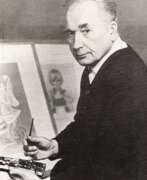

Alexei Fedorovich Pakhomov (Russian: Алексей Фёдорович Пахомов) was a distinguished Russian avant-garde painter and graphic artist, celebrated for his mastery in lithography and profound contributions to children's book illustrations. Born in Varlamovo, Vologda Province, in 1900, Pakhomov's artistic journey commenced at the Stieglitz Art School in Petrograd and extended through the Vkhutemas under notable mentors like Mstislav Dobuzhinsky and Sergey Chekhonin. His education was prolonged by historical upheavals, concluding in 1925 after a tumultuous period marked by the October Revolution and the Russian Civil War.
Pakhomov's career was notably diverse, with early works depicting the innocent and vibrant lives of children, leading him to co-found the Artists' Society and gain international acclaim. Despite facing challenges during the 1930s due to the Soviet Union's tightening grip on artistic expression, he adeptly shifted his focus more towards graphic work, significantly reducing his use of color. World War II saw him contributing to the war effort through evocative lithographs that captured the resilience of the human spirit amidst the siege of Leningrad, earning him the prestigious State Stalin Prize in 1946.
His postwar period was dedicated to illustrating the massive reconstruction efforts of Leningrad, a testament to the city's and the nation's indomitable will to rebuild and rejuvenate. By the end of his career, Pakhomov was not only a prominent figure in Soviet art but also held the esteemed title of People's Artist of the USSR, leaving a legacy that continues to inspire and captivate audiences worldwide.
For collectors and experts in art and antiques, Alexei Fedorovich Pakhomov's works represent not only a pivotal moment in the avant-garde movement but also a deep, emotive exploration of the Soviet spirit through various mediums. His lithographs and illustrations are cherished for their historical significance and artistic merit, making them invaluable additions to any collection.
To stay updated on new discoveries, sales, and auction events related to Alexei Fedorovich Pakhomov, sign up for our exclusive updates. This subscription ensures you're always informed about the latest opportunities to acquire pieces by this venerable artist.
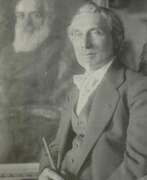

Leonid Osipovich Pasternak (Russian: Леонид Осипович Пастернак), a distinguished Russian painter, was celebrated for his significant contributions to art, especially his remarkable impressionist works. Born in Odessa, Pasternak's artistic journey led him to the prestigious Imperial Academy of Arts, reflecting his mastery and innovation in the realm of painting. His profound association with illustrious figures like Leo Tolstoy, for whom he created memorable illustrations, underscores his influence in Russian cultural circles. Pasternak's works, characterized by their vibrant expression and emotional depth, earned him accolades, including a medal at the World Fair in Paris in 1900. His dedication to teaching at the Moscow School of Painting, Sculpture and Architecture further solidified his legacy in art education.
Despite facing adversity, including a pivotal surgery in Berlin that led to his decision not to return to Russia amid political turmoil, Pasternak's resolve remained unshaken. His works continued to captivate audiences, as evidenced by his successful exhibitions in Europe and significant recognition, including his portrayal of Albert Einstein. The latter years of his life, spent in Oxford due to the Nazi regime's threat, were marked by personal loss but also by continued artistic production until his passing in 1945.
Leonid Osipovich Pasternak's art is held in high esteem, with pieces residing in prestigious museums and collections worldwide, including the Tretyakov Gallery, the Russian Museum, the Musee d'Orsay, and the Tate Gallery. His narrative extends beyond his paintings, encompassing his extensive correspondence and memoirs, which provide insight into his rich inner world and the historical context of his time. Posthumous exhibitions and publications, such as the comprehensive catalogue "The Russian Years, 1875-1921," have further cemented his place in the annals of art history, showcasing his enduring influence and the timeless appeal of his work.
For art collectors and enthusiasts eager to explore the rich tapestry of Russian Impressionism, the legacy of Leonid Osipovich Pasternak offers a compelling journey through the nuances of light, color, and emotion. Sign up for updates related to new product sales and auction events featuring Pasternak's works to deepen your appreciation and understanding of this pivotal artist's contributions to the world of art.
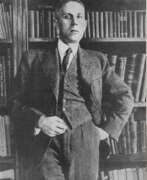

Anatoly Galaktionovich Petritsky (Russian: Анатолий Галактионович Петрицкий), a prominent Ukrainian and Soviet painter, graphic artist, theater artist, and teacher, was a master of the Ukrainian avant-garde who lived from 1895 to 1964. Born in Kiev, Petritsky was an influential figure in the Ukrainian art scene during the first half and mid-20th century. Despite the tragic loss of a large number of his graphic and pictorial works in a fire, his impact on the art world remains significant.
Petritsky's early career was marked by a vibrant engagement with the avant-garde movement. He studied at the Kiev Art School and later at the Moscow VKHUTEMAS, a hub for avant-garde art, under the guidance of A.D. Drevin and N.A. Udaltsova. His work from this period, including the painting "Invalids," exhibited at the 17th Venice Biennale in 1930, showcased his engagement with abstract paintings and constructive reliefs, highlighting the atrocities of war and reflecting on his dark childhood experiences.
Throughout the late 1920s and early 1930s, Petritsky's work diversified into painting, graphics, set design, illustration, and poster art, strongly influenced by Russian avant-garde styles. He created over 100-150 portraits, capturing not just the facial features but the essence and character of his subjects, including notable figures of the time.
Petritsky was awarded the title of People's Artist of the USSR in 1944 and won the Stalin Prize of the USSR twice, in 1949 and 1951, for his set designs. He taught at the Kiev Art Institute from 1946 to 1950, where he was a professor starting from 1947. His contributions to the art world are preserved in his memoirs, published in 1981, offering insights into his creative process and the artistic landscape of his time.
For collectors, experts in art, and antiques, the work and life of Anatoly Galaktionovich Petritsky offer a profound glimpse into the evolution of Soviet and Ukrainian avant-garde art. His legacy continues to inspire and influence contemporary art movements.
To stay updated on new discoveries, exhibitions, and auctions related to Anatoly Galaktionovich Petritsky's work, consider signing up for updates. This subscription will keep you informed about new product sales and auction events related to this key figure in the Ukrainian art of the 20th century.
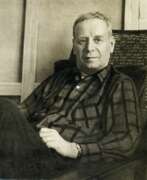

Yuri Ivanovich Pimenov (Russian: Юрий Иванович Пименов) was a distinguished Russian and Soviet painter, renowned for his pivotal role in the "lyrical Thaw" movement within Soviet art. Born in Moscow in 1903, Pimenov emerged as a vital figure in the realm of Soviet impressionism, a title he embraced despite the political and artistic shifts of his time. His unique blend of realism and impressionism, often termed "realistic impressionism," showcased his versatility and defiance against abandoning his creative principles.
Pimenov's journey in the arts was marked by his participation in the OST group and later the "Isobrigade," reflecting his adaptation and response to the evolving Soviet art scene. Despite facing challenges, including a significant psychological crisis in 1931, Pimenov's resilience and dedication to art remained unwavering. His works from this period, characterized by a rose-colored palette and an optimistic view of Moscow, highlight his evolution as an artist and his ability to portray the Soviet reality through a unique lens.
Among Pimenov's notable contributions to Soviet art are masterpieces like "Wedding on Tomorrow Street," "Lyrical Housewarming," and "Japanese Girl Kyoko," each reflecting various facets of Soviet life and Pimenov's personal experiences. These works, celebrated for their vibrant storytelling and intricate details, have solidified Pimenov's legacy as a master of Soviet impressionism.
Pimenov's influence extended beyond the canvas, as he engaged deeply with the world of theater and film, designing sets and posters that further showcased his artistic versatility. His travels abroad, particularly to Japan, enriched his perspective and influenced his later works, demonstrating his global appeal and the universal resonance of his art.
For art collectors and experts, Pimenov's oeuvre represents a unique investment in the history and evolution of Soviet art. His works, a blend of political narrative and personal expression, offer a profound insight into the era of the Soviet Union, making them invaluable pieces for any collection.
To stay updated on new product sales and auction events related to Yuri Ivanovich Pimenov, sign up for our updates. This subscription is your gateway to exploring the rich legacy and enduring impact of Pimenov's art on the Soviet and global art scenes.
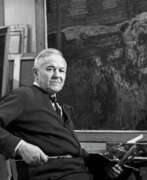

Arkady Alexandrovich Plastov (Russian: Аркадий Александрович Пластов), a luminary of Soviet art, was a Russian painter whose oeuvre is a testament to the simplicity and beauty of peasant life, making him a key figure in the realm of Soviet realism. His legacy is celebrated across Russia, with his works featured in prestigious institutions such as the State Tretyakov Gallery, Smolensk State Museum-Reserve, and the State Russian Museum in St. Petersburg, among others. Plastov's unique approach to art did not confine itself within the strict boundaries of socialist realism; instead, it traversed the depiction of peasant daily life and the intrinsic harmony between humans and nature.
Born into a family with deep roots in icon painting, Plastov's journey in art commenced in Prislonikha, Ulyanovsk province, where the landscapes and people of his hometown became the central theme of his work. Despite the hardships of a fire in 1931 that destroyed much of his early work, Plastov's resilience led him to create masterpieces that resonated with the Soviet populace. His dedication to portraying the truth of peasant life, through the lens of genuine admiration and respect for its beauty, earned him accolades such as the Stalin Prize, Lenin Prize, and the title of People's Artist of the USSR.
Plastov's paintings like "Haymaking," "Harvest," "First Snow," and "Spring" are vivid narrations of rural life, blending the everyday with the idyllic, thereby encapsulating the essence of Russian culture and its landscape. His works serve not only as historical records but also as celebrations of the human spirit and its connection to the land.
For collectors and experts in art and antiques, Plastov's paintings offer a glimpse into the soul of Soviet Russia, capturing the unadulterated beauty of its countryside and the resilience of its people. His art is a bridge between the past and present, reminding us of the enduring spirit of humanity against the backdrop of history.
To stay updated on exhibitions and auctions featuring Arkady Alexandrovich Plastov's work, sign up for updates. This subscription ensures you'll be the first to know about new sales and events related to this illustrious artist, keeping you connected to the heart of Soviet realism and Russian art tradition.
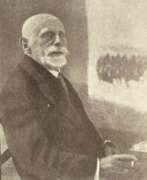

Jan Bogumil Rosen (Russian: Ян Богумил Розен) was a Polish painter born on October 16, 1854, in Warsaw, and passed away on November 8, 1936, in the same city. He specialized in battle scenes and was known for his meticulous attention to detail, especially in depicting horses and military uniforms.
Rosen began his artistic education under the guidance of Franciszek Kostrzewski and later studied at the Academy of Fine Arts in Munich. He also trained under renowned painters Jean-Léon Gérôme and Isidore Pils at the Académie des Beaux-Arts in Paris. Throughout his career, Rosen's work was exhibited widely and garnered significant attention, particularly in Munich and Warsaw. One of his notable works, "Contest of Carriages at the Ujazów Castle Square," exemplifies his skill in portraying dynamic scenes with great precision.
In addition to his battle scenes, Rosen also produced genre paintings and portraits. His work received recognition from various prestigious institutions, and he served as a court painter for Tsar Alexander III of Russia. Despite spending much of his career abroad, Rosen's work remained deeply connected to Polish themes and history.
For collectors and enthusiasts interested in Jan Bogumił Rosen's works, subscribing to updates about new product sales and auction events is highly recommended. Stay informed about opportunities to acquire pieces by this masterful artist.
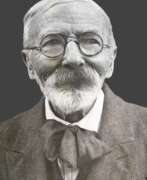

Nikolay Semyonovich Samokish (Russian: Николай Семёнович Самокиш) was a distinguished Russian artist and painter, renowned for his contributions to the realms of military, historical, and animal genre painting. Born in the late 19th century, Samokish's work encapsulates the vibrant culture and art of his time, showcasing his exceptional skills in sculpture and painting that have captivated art collectors and experts alike.
Samokish's oeuvre is celebrated for its meticulous attention to detail, dynamic compositions, and the ability to evoke emotion and narrative through visual art. His paintings often depict scenes of historical significance or moments of everyday life, rendered with a realism and intensity that bring the subjects to life. Among his known works, many are housed in prestigious museums and galleries, serving as testament to his enduring legacy in the art world.
For collectors and aficionados of art and antiques, Samokish's work represents a unique intersection of culture, history, and artistic excellence. His pieces are not only valuable for their aesthetic appeal but also for their historical context, making them sought-after additions to any collection. To stay informed about new product sales and auction events featuring Nikolay Semyonovich Samokish's work, we invite you to sign up for updates. This subscription is your gateway to exploring the exquisite artistry of Samokish, ensuring you don't miss an opportunity to own a piece of cultural heritage.
This exploration into Nikolay Semyonovich Samokish's life and work is based on a thorough review of available information, aiming to provide a concise yet comprehensive overview that resonates with art collectors and experts. His contributions to the field of art continue to inspire and attract admiration, underscoring the timeless appeal of his work.
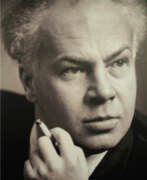

Vladimir Alexandrovich Serov (Russian: Влади́мир Алекса́ндрович Серо́в) was a Russian painter, illustrator, and teacher renowned for his commitment to the socialist realism movement. Born into a rural teacher's family on July 21, 1910, Serov's artistic journey began at the Leningrad Institute of Proletarian Fine Arts, from which he graduated in 1931. Under the tutelage of Isaak Brodsky, Serov honed his craft before embarking on a career that would see him deeply engaged in the artistic and political life of the Soviet Union. His works, primarily focused on historical-revolutionary themes, portraits, and landscapes, embody the spirit and ideological drive of the era, reflecting the official Soviet historiography of the 1940s and 1960s.
During World War II, Serov's leadership roles within the Leningrad Union of Artists and his membership in the Communist Party since 1942 underscored his influence in the Soviet art scene and his active participation in the political sphere. As president of the Soviet Academy of Arts from 1962 until his death in 1968, Serov played a pivotal role in shaping Soviet art and culture. His burial at the Novodevichy Cemetery in Moscow marks the resting place of a figure who not only witnessed but also contributed to the significant historical events of his time through his art.
For collectors and experts in art and antiques, Serov's body of work offers a fascinating glimpse into the soul of Soviet realism, characterized by ideological determination, clear composition, and precise drawing. His pieces, such as "V.I. Lenin proclaims Soviet power," remain pivotal in understanding the artistic and cultural narratives of the Soviet era.
To stay updated on sales and auction events related to Vladimir Alexandrovich Serov's art, sign up for updates. This subscription is your gateway to exploring the profound impact and legacy of Serov's contributions to Soviet art and history.
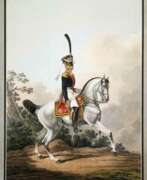

Samuel Petrovich Shiflyar (Russian: Самуил Петрович Шифляр) was a Russian painter, draughtsman, engraver, and lithographer, known for his significant contributions to portraiture and battle scenes. Born in 1786, Shiflyar initially worked for the Imperial Porcelain Factory, where he honed his skills in detailed and delicate artwork. He later joined the Military Topographic Depot of the Russian Imperial Army, where he produced numerous lithographs depicting military events and figures.
Shiflyar’s works are distinguished by their meticulous attention to detail, especially in military uniforms and battle scenes, making them valuable historical records. His piece "The Storming of Izmail" is particularly noted for its vivid depiction of the famous battle. Shiflyar's art provides a window into the military history of his time, combining artistic skill with historical accuracy.
Many of his works are housed in prestigious museums, reflecting their enduring value. Shiflyar’s pioneering efforts in lithography paved the way for future generations of Russian artists.
To stay updated on new product sales and auction events related to Samuel Petrovich Shiflyar, sign up for our newsletter.
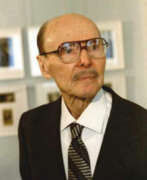

Dementy Alekseyevich Shmarinov (Russian: Дементий Алексеевич Шмаринов) was a prolific Russian graphic artist, illustrator, and teacher, whose work left an indelible mark on the world of art. Born in Kazan in 1907, he moved through various phases of education and artistic development, from his early lessons with N.A. Prakhov in Kiev to his formative years at the studio of D.N. Kardovsky in Moscow. Shmarinov’s work spanned a broad range of subjects, but he is perhaps best remembered for his contributions to illustrating classic literature and his poignant depictions of the Soviet Union during World War II. His illustrations for novels by Dostoevsky and Tolstoy, among others, are celebrated for their depth and detail, effectively capturing the essence and atmosphere of the literary works they accompany.
During World War II, Shmarinov's art took a decidedly patriotic turn as he created wartime political posters and a series of graphic works reflecting the suffering and resilience of the Soviet people. His collection "We Won’t Forget, We Won’t Forgive!" exhibited at the Tretyakov Gallery in Moscow, garnered significant attention for its raw depiction of the horrors of war and earned him the State Prize of the USSR in 1943. His contributions were not only limited to times of conflict; Shmarinov was deeply involved in the Soviet art community, serving as chairman of the Moscow Union of Artists and as a member of the USSR Academy of Arts, where he influenced generations of artists with his astute observations and dedication to the craft.
Shmarinov's legacy is not merely in his artworks but also in his role as an educator and mentor, shaping the future of Russian art through his teachings and organizational skills. His ability to convey complex characters and scenes with striking clarity and emotional depth made him a revered figure in Soviet and Russian art. His works continue to be celebrated, offering insights into the cultural and historical context of his times.
For collectors and experts in art and antiques, Dementy Alekseyevich Shmarinov remains a figure of immense importance. His illustrations and graphic works are not only aesthetically compelling but also historically significant, reflecting the tumultuous periods through which he lived. To stay updated on sales and auction events related to Shmarinov's work, signing up for updates is a wise move for enthusiasts eager to explore the depths of Russian art and history.
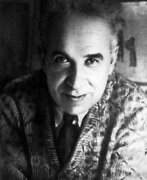

David Petrovich Shterenberg (Russian: Давид Петрович Штеренберг) was a Ukrainian-born Russian artist, recognized for his significant contributions to painting and graphic art. Born into a Jewish family in Zhitomir, Ukraine, Shterenberg's journey in art began in Odessa, leading him to Paris between 1906 and 1912, where he immersed himself in the vibrant artistic community. His studies at the Académie Vitti and interactions with notable artists like Kees van Dongen shaped his early artistic endeavors. Shterenberg's work, influenced by Paul Cézanne and Cubism, is celebrated for its expressive imagery, clear composition, and the strategic use of space.
Shterenberg's art evolved significantly over time, reflecting his deep engagement with the cultural shifts of his era. After returning to Russia post-1917 Revolution, he became an influential figure in Soviet art, leading the Department of Fine Arts at the People's Commissariat for Education and founding the Institute of Artistic Culture. Despite facing challenges under Soviet authority, which pushed him towards a more 'realistic' style, Shterenberg remained true to his unique artistic vision. His later years saw a return to themes of lyrical contemplation, notably in his Biblical Subjects series, completed before his death in 1948.
Today, Shterenberg's legacy lives on in major public galleries in Russia, including the Tretyakov Gallery, the Pushkin Museum, and the Russian Museum, as well as in private collections worldwide. His work encompasses a broad spectrum, from avant-garde experiments to intimate expressionist pieces, securing his place in the annals of modern art.
For enthusiasts and collectors alike, David Petrovich Shterenberg's oeuvre offers a rich exploration of early 20th-century art, marked by its innovative use of form and color, and its reflective engagement with the artist's cultural heritage and contemporary political landscape. Sign up for updates on new product sales and auction events related to Shterenberg, and discover more about this pivotal artist's contributions to the world of art.


Nikolai Alexandrovich Sokolov (Russian: Николай Александрович Соколов) was a prominent Soviet graphic artist and painter, renowned for his significant contributions to the USSR's art scene. Born in 1903 near Moscow, he became a key member of the KuKriNiksy collective, alongside Mikhail Kupriyanov and Porfiry Krylov, where they produced influential anti-Nazi propaganda and satirical artworks during World War II. These pieces are celebrated for their critical role in wartime artistic expression.
Educated at the esteemed VKHUTEMAS, Sokolov was under the mentorship of leading artists, graduating in 1929. His career was not limited to his solo work; he made substantial contributions to newspapers and magazines through political posters, book illustrations, and caricatures. Sokolov was honored with several prestigious awards, including being named People's Artist of the USSR, receiving the Lenin Prize, and being designated Hero of Socialist Labor, highlighting his contributions to Soviet arts.
Sokolov's diverse body of work, including portraits, landscapes, and still lifes, is featured in significant collections like the State Tretyakov Gallery and the State Russian Museum. His international recognition is underscored by his presence in global institutions such as the Museum of Modern Art (MoMA), demonstrating his far-reaching influence.
For art collectors and experts, Sokolov’s legacy provides a fascinating insight into Soviet artistic practices, blending historical significance with exceptional craftsmanship. His continued relevance in art and auction events offers a direct link to exploring the Soviet art landscape through the work of one of its most impactful figures.
Stay informed about new sales and exhibitions featuring Sokolov’s art by signing up for updates. This subscription is an opportunity to connect with the rich legacy of a Soviet art luminary, ensuring you’re at the forefront of discovering and appreciating Nikolai Alexandrovich Sokolov's enduring artistic contributions.
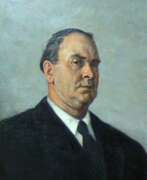

Pavel Petrovich Sokolov-Skala (Russian: Павел Петрович Соколов-Скаля) was a prominent Russian artist, celebrated for his contributions to Soviet art and culture. Born in 1899, Sokolov-Skala's artistic journey was marked by his affiliation with the Communist Party of the Soviet Union, reflecting the political landscape of his time through his work. His legacy includes receiving prestigious awards like the Stalin Prize and the Medal "For Valiant Labour in the Great Patriotic War 1941–1945", acknowledging his influence and contribution to Russian art and history.
Sokolov-Skala's oeuvre is notable for its diversity, ranging from monumental historical paintings to poignant war posters, demonstrating his versatility and mastery across different mediums. His works, such as "The Clear Glade" and "A Heroic Deed of Captain Gastello," are celebrated for their powerful portrayal of Soviet themes, capturing the spirit and challenges of his era. These pieces not only underscore Sokolov-Skala's artistic prowess but also his commitment to depicting the Soviet Union's ideals and narratives.
His paintings and posters, often characterized by their bold use of color and dramatic compositions, provide insight into the socio-political context of the 20th century Soviet Union, making him a key figure in Russian art history. Despite his significant role, Sokolov-Skala's work invites audiences to explore the nuanced intersections of art, politics, and history, offering a complex portrait of Soviet life.
Collectors and experts in art and antiques have continuously shown interest in Sokolov-Skala's works, highlighting their historical value and artistic merit. His contributions remain a focal point of study and appreciation within both Russian and international art circles.
For enthusiasts looking to delve deeper into the world of Pavel Petrovich Sokolov-Skala or to add a piece of his legacy to their collection, signing up for updates can provide exclusive access to new product sales and auction events featuring his work. This is a unique opportunity to engage with the rich history and profound impact of Sokolov-Skala's art on contemporary culture.
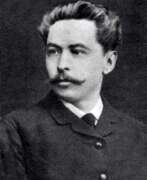

Alexei Stepanovich Stepanov (Russian: Алексей Степанович Степанов) was a distinguished Russian genre painter, illustrator, and art teacher born on May 6, 1858, in Simferopol and passed away on October 5, 1923, in Moscow. Stepanov's early life was marked by tragedy; he lost both parents by the age of five and was subsequently raised in a Moscow orphanage for children of military families. His formal education at the Konstantin Surveying Institute was followed by auditing classes at the Moscow School of Painting, Sculpture and Architecture, where he was influenced by prominent artists of the time.
Stepanov's art career flourished when he began exhibiting with the Peredvizhniki, a group of realist artists, and later helped found the Union of Russian Artists. His works often depict serene rural scenes and everyday peasant life, resonating with a mood of profound emotional depth. Notable works include "Moose Herd," acquired by Pavel Tretyakov, and "Morning Greetings," which earned him the title of Academician from the Imperial Academy of Arts. His work "The Swing" was notably acquired by the Carnegie Museums of Pittsburgh later in his career.
For those interested in the Russian art movement and genre painting, Stepanov's contributions are invaluable. His works can be viewed in major collections such as the State Tretyakov Gallery. To stay updated on exhibitions and sales related to Alexei Stepanov, consider subscribing to updates for collectors and art enthusiasts.
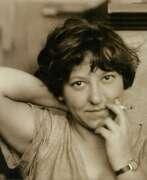

Varvara Fyodorovna Stepanova (Russian: Варва́ра Фёдоровна Степа́нова) was a Russian artist, a key figure in the avant-garde movement, particularly within the Constructivist branch that emerged in post-revolutionary Russia. Her work spans across various domains, including painting, graphic design, textile design, and theatrical set design. Stepanova's marriage and collaboration with fellow artist Aleksandr Rodchenko played a significant role in their creative exploration, where they together embarked on endeavors that significantly influenced the constructivist and avant-garde scenes.
Stepanova's contribution to the world of art and design was profound, especially in clothing and textile design, where she innovated with her approaches to "prodezodezhda" (production clothing) and "sportodezhda" (sports clothing), integrating geometric forms and functionality over aesthetic decoration. Her designs were not just artistic statements but were deeply embedded with practicality and efficiency, aiming to serve the new socialist society of the Soviet Union. Despite facing economic restrictions that limited the mass production of her designs, Stepanova's work in the clothing industry, particularly through her theatrical costumes, showcased her unique ability to blend art with functionality, emphasizing movements and creating garments that transformed the body into dynamic compositions.
In the realm of graphic design and propaganda, Stepanova's work alongside the early Soviet campaigns to promote literacy and her contribution to the magazine "LEF" illustrate her commitment to serving societal development through art. She utilized her skills in typography and book design to support educational and revolutionary propaganda, further highlighting her multifaceted talent and her dedication to the constructivist ideals.
Stepanova's textile designs, characterized by their bold graphic designs and innovative approach to fabric production, were another area where her artistic genius shone. Working at the First State Textile Factory and as a professor of textile design, she created over 150 fabric designs that featured geometric shapes and a limited color palette, showcasing her ability to generate dynamic, multi-dimensional designs despite technological and material limitations.
Her involvement in Constructivism was marked by a clear departure from the idea of art as a spiritual activity, towards a focus on serving the revolutionary development of society. Stepanova, along with Rodchenko and others, formed the first Working Group of Constructivists, advocating for art that was directly useful for society, leading her to design clothing that rejected class and gender distinctions in favor of functional, utilitarian aesthetics.
One of Stepanova's notable contributions was to the field of photomontage, particularly through her work "The Results of the First Five-Year Plan," which utilized this technique to promote Soviet achievements. This work exemplifies how she applied constructivist principles to serve the ideals of the Soviet Union, blending art with political propaganda in a manner that was visually striking and ideologically aligned with the goals of the newly established USSR.
For collectors and experts in art and antiques, Stepanova's work remains a fascinating exploration of how avant-garde principles can be applied across different mediums and for various societal needs. Her legacy in the constructivist movement and her contributions to the avant-garde are celebrated in collections and exhibitions around the world.
To stay updated on new product sales and auction events related to Varvara Fyodorovna Stepanova, sign up for updates. This subscription ensures you remain informed about opportunities to acquire pieces linked to this pivotal figure in Russian avant-garde art.
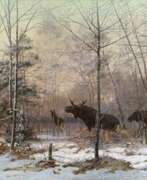

Evgeny Alexandrovich Tikhmenev (Russian: Евгений Александрович Тихменев) was a Russian artist, born in 1869 and passed away in 1934. Renowned for his depictions of natural scenes and hunting expeditions, his works encapsulate the essence of rural Russian life during his time. Tikhmenev's artwork, such as "Before the Hunt," captures moments of anticipation and interaction with nature, often featuring meticulous detail and vibrant settings.
His pieces are cherished in art circles for their historical value and their ability to convey the story of an era when hunting was not only a sport but a significant aspect of rural survival and culture. Notably, Tikhmenev's paintings have been sold at various auctions, with some pieces fetching substantial prices, highlighting their desirability among collectors and art enthusiasts.
For collectors and experts in art and antiques, Tikhmenev's works present a valuable investment, both culturally and financially. To stay updated on new sales and auction events featuring Evgeny Alexandrovich Tikhmenev’s work, signing up for timely updates is recommended, ensuring enthusiasts don't miss out on acquiring a piece of Russian art history.
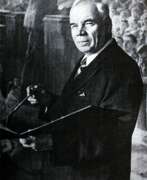

Karp Demyanovich Trokhimenko (Russian: Карп Демьянович Трохименко) was a Soviet Ukrainian painter known for his significant contributions to socialist realism. Born in 1885, Trokhimenko's works primarily depicted scenes of everyday life, socialist construction, and the natural beauty of Ukraine.
Trokhimenko's distinctive style is characterized by his detailed, realistic portrayal of his subjects, capturing the spirit and ideals of the Soviet era. He was celebrated for his ability to convey the human experience within the broader context of socialist society. His paintings often featured vibrant colors and meticulous attention to detail, making them stand out in exhibitions.
Among his notable works are "Shevchenko and Engelhardt" (1939), "Kateryna" (1959), and "May Days in Old Kyiv" (1975), all housed in the National Art Museum of Ukraine. These paintings exemplify his talent in depicting historical and rural life with a sense of warmth and authenticity. Trokhimenko's legacy continues to influence contemporary Ukrainian artists, and his works remain highly regarded in art circles.
For updates on new product sales and auction events related to Karp Demyanovich Trokhimenko, sign up for our newsletter.


Orest Georgievich Vereysky (Russian: Орест Георгиевич Верейский) was a Soviet-Russian artist, born into a creative family in 1915 in Anosovo, now part of the Smolensk region, and passed away in 1993. His father, Georgy Vereisky, and his mentor, A. A. Osmyorkin, played pivotal roles in his artistic development, primarily in Leningrad, now Saint Petersburg. Vereysky's relocation to Moscow in 1940 marked a significant phase in his career, further distinguished by his contributions during the Great Patriotic War as a member of the Krasnoarmeyskaya Pravda editorial office.
Vereysky's legacy is particularly notable in the field of book graphics, where he brought to life the works of significant writers such as M. A. Sholokhov, K. G. Paustovsky, A. A. Fadeev, and even Ernest Hemingway, among others. His illustrations for A.T. Tvardovsky's works, including the celebrated poem about Vasily Turkin, stand out as a testament to his artistic versatility and depth.
His body of work, celebrated for its contribution to easel graphics, encompasses a diverse range of drawings and watercolors. Despite his passing, Vereysky's influence persists, with his artworks being cherished by collectors and art enthusiasts alike.
For those keen on exploring the profound impact and the enduring legacy of Orest Georgievich Vereysky's art, staying updated on exhibitions and sales is essential. Sign up for updates related to Orest Georgievich Vereysky to not miss out on new discoveries and auction events showcasing his remarkable contributions to the world of art.
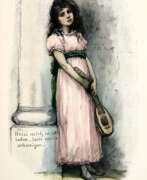

Anna von Wahl (Russian: Анна Эдуардовна фон Валь) was a Baltic-German painter and illustrator, born in 1861 in Saint Petersburg and active until her death in 1938. Known for her delicate and evocative works, von Wahl studied at the Imperial Academy of Arts, where she honed her skills in graphic art and illustration.
Von Wahl's artistic career spanned six decades, during which she created numerous illustrations and paintings that reflected the socio-cultural dynamics of her time. Her work often depicted family and children's scenes, infused with a gentle, sentimental quality. One of her notable works, "Stimmungsbilder" (Mood Pictures), is a collection of illustrations known for its tender portrayal of everyday life.
In addition to her illustrative works, von Wahl's paintings were also well-regarded. Her art was exhibited in several galleries, and she was a member of various artistic associations. Although not as widely recognized today, her contributions to the art world during her lifetime were significant, reflecting the aesthetics and sensibilities of late 19th and early 20th-century Baltic-German culture.
For those interested in exploring more about Anna von Wahl and her works, consider signing up for updates on auction events and new product sales related to her art. This will ensure you stay informed about opportunities to view and acquire her unique pieces.
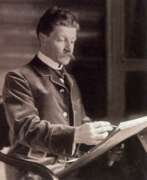

Mikhail Aleksandrovich Vrubel (Russian: Михаил Александрович Врубель), a distinguished Russian artist, was renowned for his profound contributions to the world of art, spanning painting, sculpture, and the decorative arts. Born in Omsk in 1856, Vrubel's unique approach to art, characterized by its intricate detail and vibrant use of color, has captivated art collectors and experts alike. His works are celebrated for their innovative blend of realism and Symbolism, setting him apart in the pantheon of great artists.
Vrubel's oeuvre is notable for its fantastical themes, often drawing on mythological and fairy tale motifs to create deeply atmospheric and emotionally charged pieces. Among his most famous works are "The Demon Seated" and "The Swan Princess," which reside in prestigious Russian museums like the Tretyakov Gallery and the Russian Museum. These pieces exemplify his skill in using color and form to evoke a haunting, otherworldly beauty.
His influence extends beyond his canvas; Vrubel's contributions to theater design and decorative art have left a lasting legacy on the Russian cultural landscape. For art collectors and enthusiasts, Vrubel's work offers a window into the soul of Russian Symbolism, making his pieces highly sought after for their beauty and historical significance.
We invite you to sign up for updates on sales of art pieces and auction events related to Mikhail Aleksandrovich Vrubel. This is a unique opportunity to deepen your understanding of Russian art and to enhance your collection with works from one of its most illustrious figures. Join us in exploring the enduring legacy of Vrubel's artistry.


Indulis Zariņš (Russian: Индулис Августович Зариньш) was a Latvian painter and educator, renowned for his mastery in tonal painting and as a significant figure in figurative painting. Born in Riga in 1929, Zariņš' art was profoundly influenced by historical and social themes, reflecting his deep engagement with the Latvian and Soviet cultural milieu. His education and early career were marked by challenges, including deportation with his family during World War II, but he emerged as a leading artist, completing his education at the Latvian Academy of Art under Eduards Kalniņš in 1958.
Zariņš was recognized for his contributions to art with several awards, including the Grekov Prize in 1968 and the title of People's Artist of the USSR in 1986. His political activism during the Latvian Awakening period is notable, as he transitioned from a critic of mass actions to a representative of the Latvian Popular Front, reflecting his complex relationship with the era's political dynamics.
His works, particularly those focusing on the Latvian Red Riflemen, combine Latvian national history with Soviet ideological demands, offering a nuanced exploration of identity and memory. Zariņš' ability to navigate these themes while drawing inspiration from Western European tonal painting traditions, like those of Diego Velázquez and Johannes Vermeer, highlights his skill in blending historical narratives with artistic innovation.
For collectors and experts in art and antiques, Zariņš' legacy is a testament to the rich cultural history of Latvia and the broader Soviet experience. His works not only adorn museums but also continue to influence contemporary understandings of Latvian art and history.
For updates related to Indulis Zariņš, including sales and auction events of his works, sign up for our newsletter. This subscription is your gateway to the latest in the world of art and antiques, connecting you directly to the legacy of Zariņš and beyond.
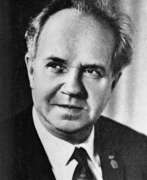

Nikolai Nikolaevich Zhukov (Russian: Николай Николаевич Жуков), a prominent Soviet graphic artist and illustrator, left a lasting mark on the world of visual arts with his distinctive style and thematic diversity. Born on December 2, 1908, in Moscow, Zhukov's early life was immersed in the rich cultural heritage of Russia, shaping his artistic endeavors from a young age. His education at the Nizhny Novgorod Art and Industrial College and the A.P. Bogolyubov Saratov Art College provided him with a solid foundation in the arts, leading to a prolific career that spanned several decades.
Zhukov's contributions to Soviet art are multifaceted, encompassing book illustrations, posters, and active participation in the Great Patriotic War as a war correspondent for Pravda. His role as the artistic director of the Studio of Military Artists named after M.B. Grekov underscored his commitment to depicting the Soviet people's resilience and heroism. Among his notable works are front-line posters such as "Defend Moscow!" and "They will not pass!", as well as illustrations for "The Tale of a Real Man" by Boris Polevoi.
Zhukov's artistic legacy is preserved through awards such as the People's Artist of the USSR (1963), the Stalin State Prize (1943, 1951), and the Order of Lenin (1967). His works continue to inspire and are celebrated in exhibitions and collections both in Russia and internationally. The establishment of the house-museum in Yelets in 1992 further commemorates his contributions to art and culture.
For collectors and art enthusiasts, the opportunity to engage with Zhukov's works offers a unique insight into the Soviet era's artistic expressions. To stay updated on sales and auction events featuring Nikolai Nikolaevich Zhukov's work, signing up for updates is a valuable resource for those passionate about collecting and appreciating Soviet art.
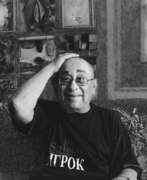

Boris Iosifovich Zhutovsky (Russian: Борис Иосифович Жутовский) was a Russian artist and illustrator, celebrated for his unique contributions to book art and graphic design. Born on December 14, 1932, Zhutovsky's career began to flourish after he graduated from the Moscow Polygraphic Institute in 1956. He worked in various Moscow publishing houses, where he left a significant mark with his expressive and sometimes grotesque graphic portraits and abstract painterly compositions.
Zhutovsky's artistic journey was notably marked by his involvement in the "unofficial art" movement within the Soviet Union. His works gained international exposure as they were exhibited in countries like Finland, Italy, Canada, and the United States, among others. This wide exposure came especially after he faced restrictions on exhibiting his work in the USSR following a scandal at a 1962 exhibition criticized by Nikita Khrushchev.
Zhutovsky's artworks are held in high regard and are part of many prestigious museum and private collections globally. His contributions to art were recognized with several awards, including medals at the Zlata Grona festival and the exhibition Alternative Attuale 2 in L'Aquila, Italy.
For art collectors and enthusiasts interested in modern Russian art, staying updated on Boris Iosifovich Zhutovsky's works can be deeply rewarding. To keep abreast of new sales and auction events featuring his art, consider subscribing to updates specifically tailored to Zhutovsky's works. This subscription will ensure you are informed of the latest opportunities to appreciate or acquire pieces by this distinguished artist.
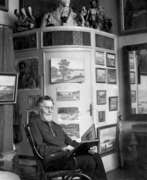

Antanas Žmuidzinavičius was a Lithuanian painter and art collector, celebrated for his significant contributions to Lithuanian art and culture. Educated at the Veiveriai Teachers' Seminary, he initially worked as a teacher while advancing his art education in Warsaw. Žmuidzinavičius's passion for art led him to Paris, where he studied at prestigious institutions such as the Académie Colarossi, enhancing his painting and drawing skills.
During World War I and the interwar period, Žmuidzinavičius played an instrumental role in safeguarding Lithuanian art and culture. He was a pivotal figure in organizing art exhibitions, and he dedicated considerable efforts to the collection and preservation of artworks amid political turmoil. His commitment to art extended beyond creation; he was deeply involved in education, teaching drawing at the Kaunas Art School and influencing generations of artists.
One of Žmuidzinavičius's most enduring legacies is the Devils Museum in Kaunas, a unique institution dedicated to sculptures and carvings of devils from around the world. The museum, which started with Žmuidzinavičius's collection, has grown to house over 3,000 items, reflecting a wide range of cultural perspectives on the devil. This museum not only showcases Žmuidzinavičius's fascination with folklore and mythology but also serves as a testament to his broad interests and contributions to Lithuanian heritage.
Antanas Žmuidzinavičius's work and his Devils Museum continue to captivate visitors, offering insights into Lithuanian culture, history, and art. For those intrigued by his life, contributions, and the unique devil collection, the Devils Museum in Kaunas is a must-visit, embodying the spirit of one of Lithuania's most notable artists.
For collectors and experts in art and antiques, the legacy of Antanas Žmuidzinavičius provides a fascinating glimpse into the rich cultural tapestry of Lithuania. Sign up for updates to stay informed on new product sales and auction events related to the incredible work of Antanas Žmuidzinavičius and to explore the depth of Lithuanian art and history further.